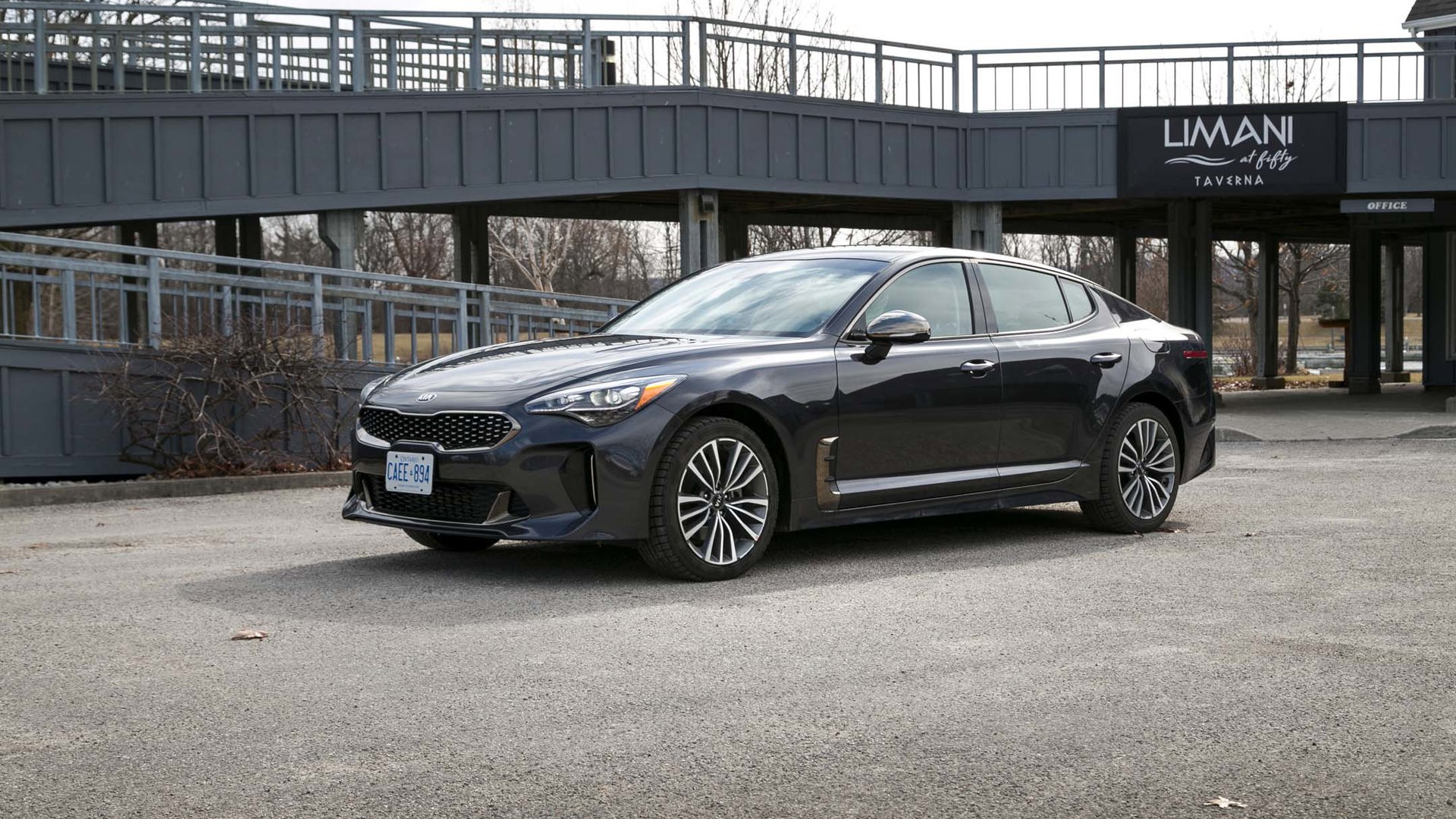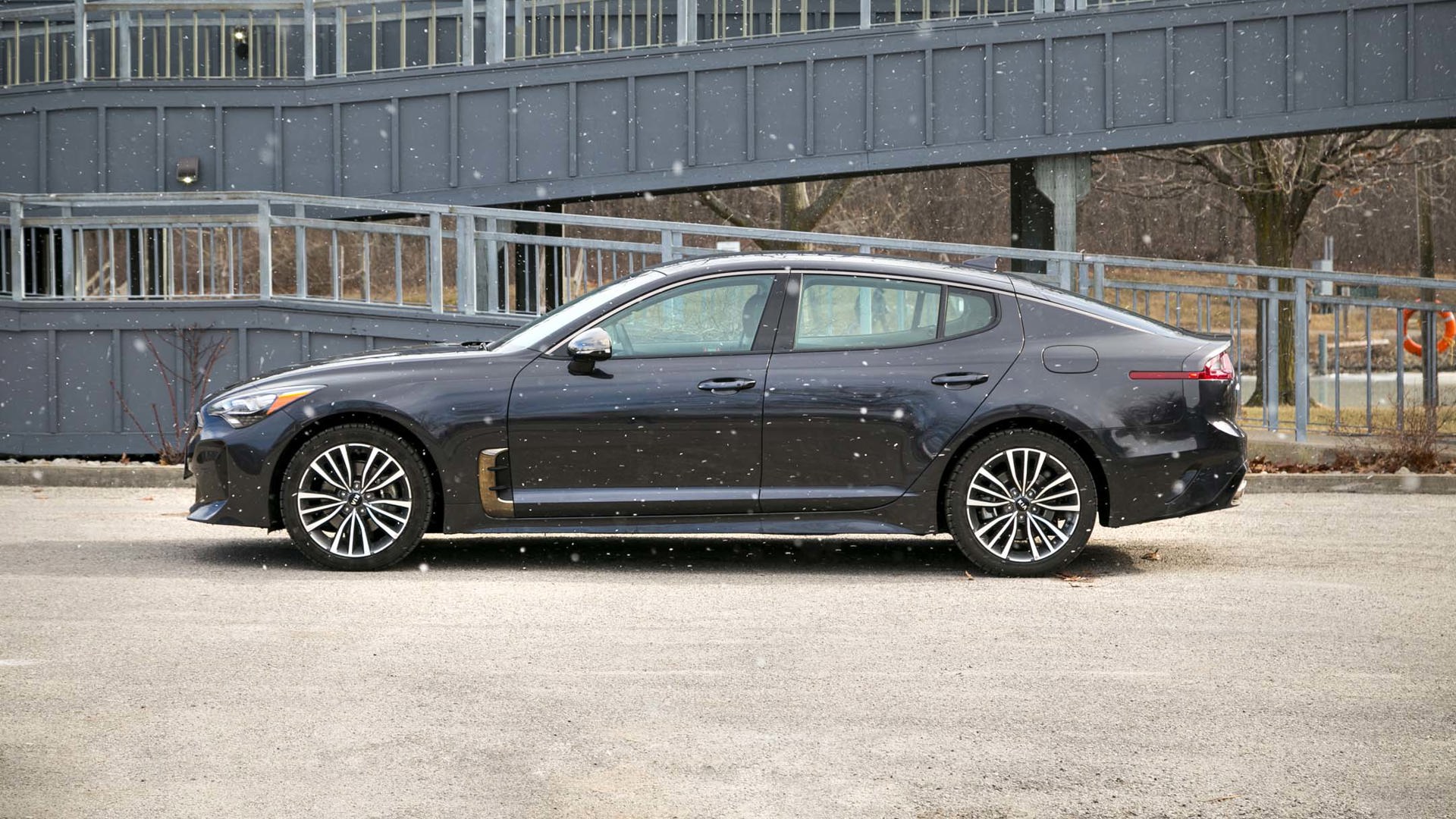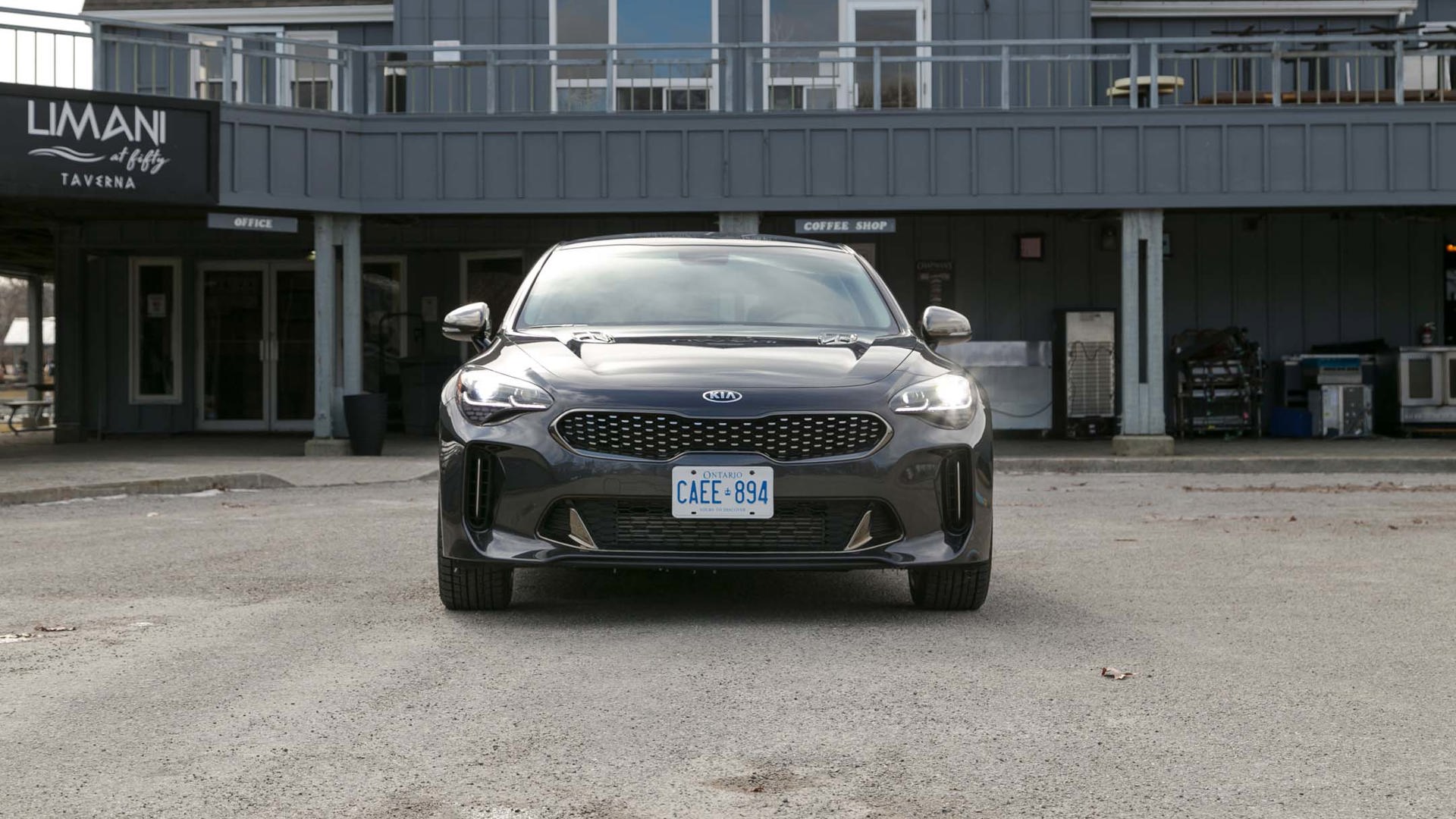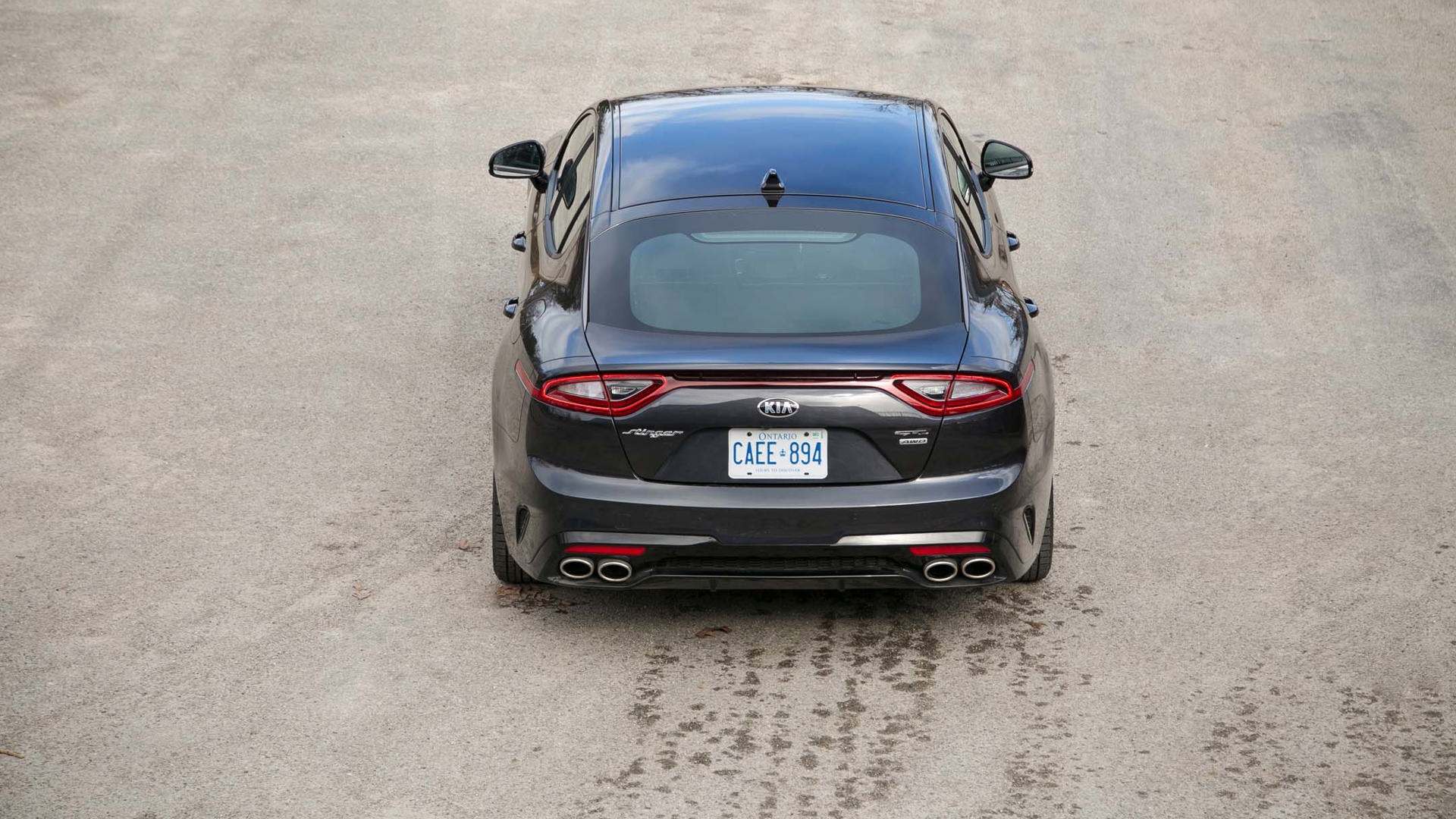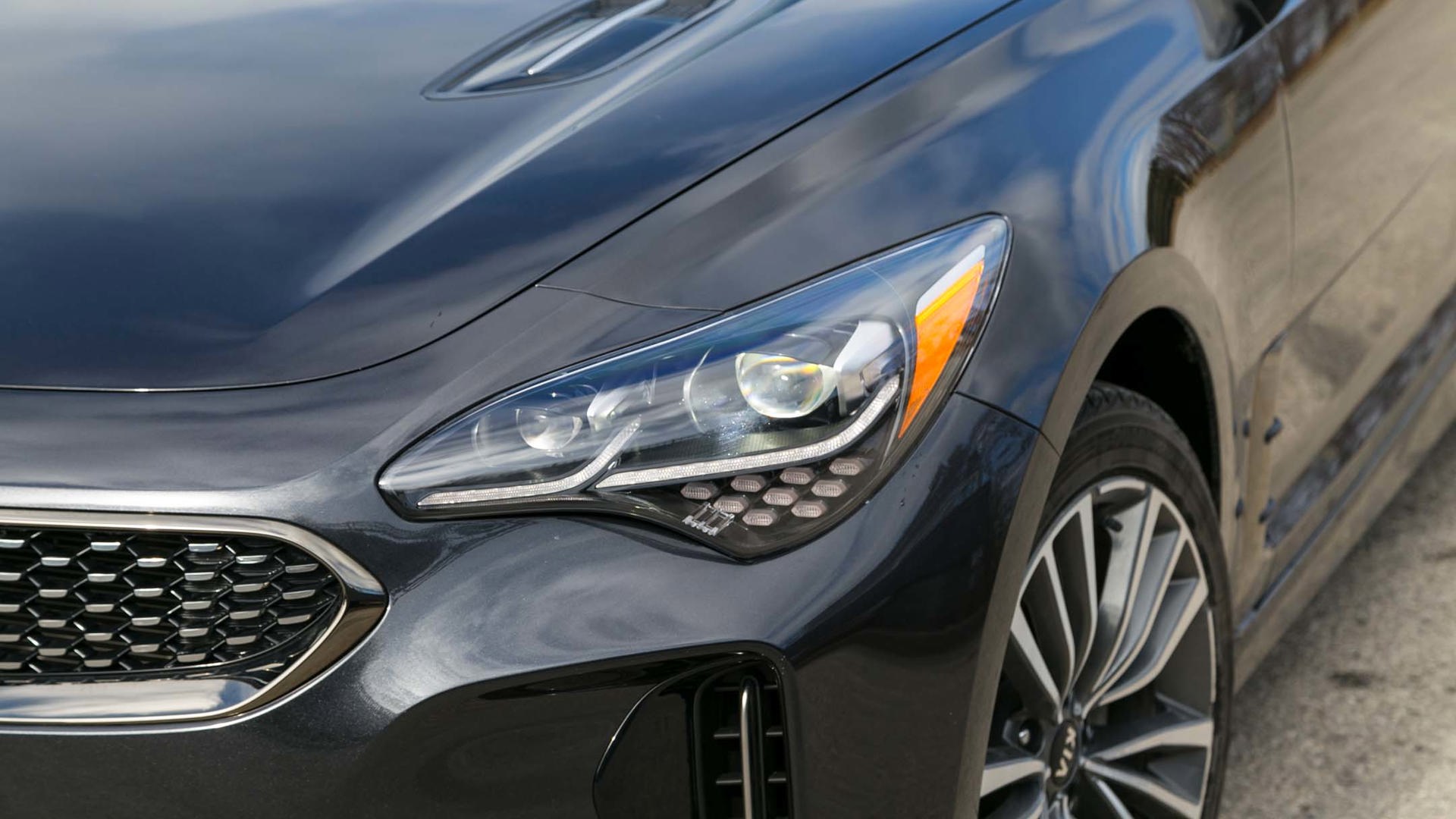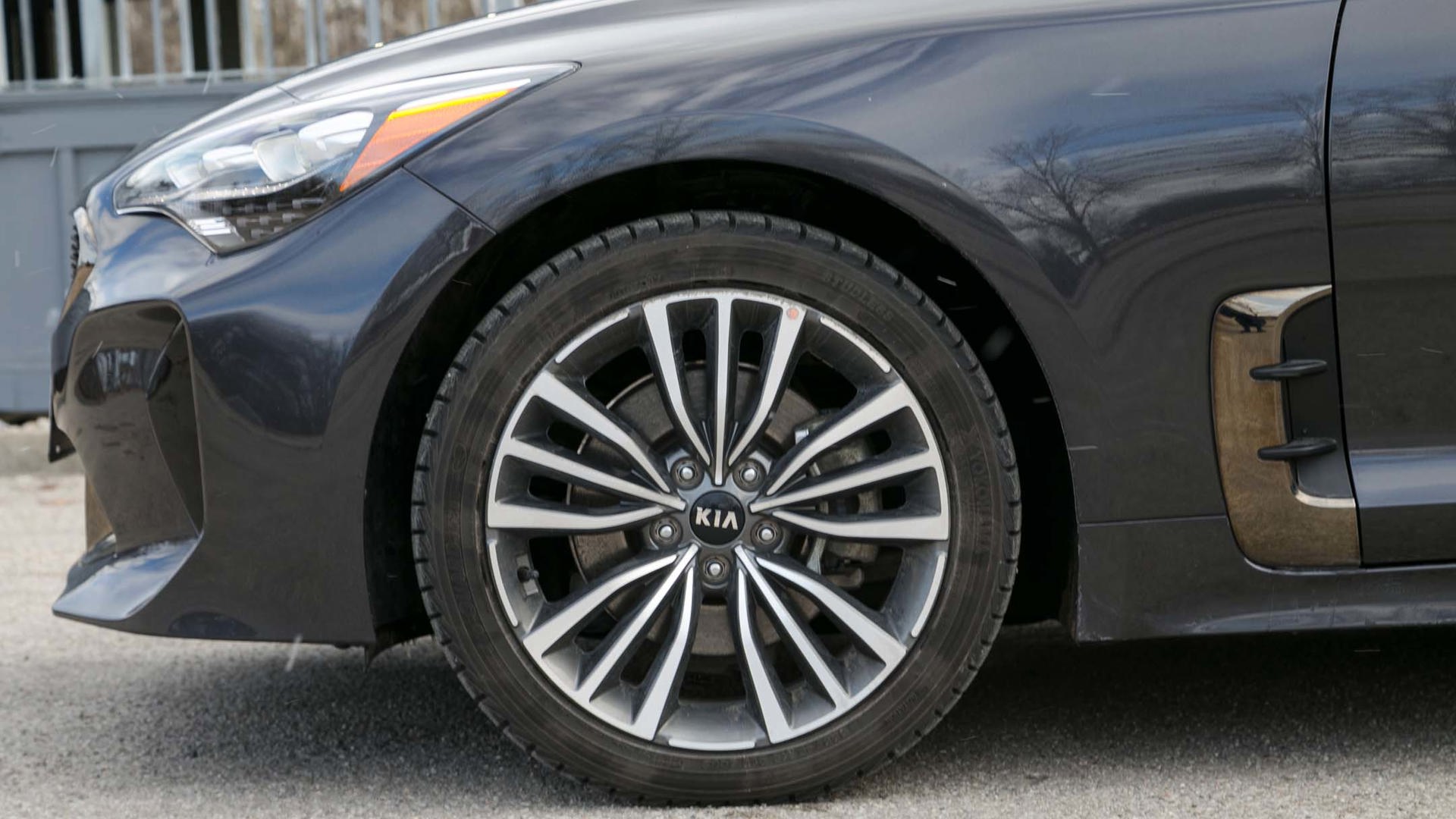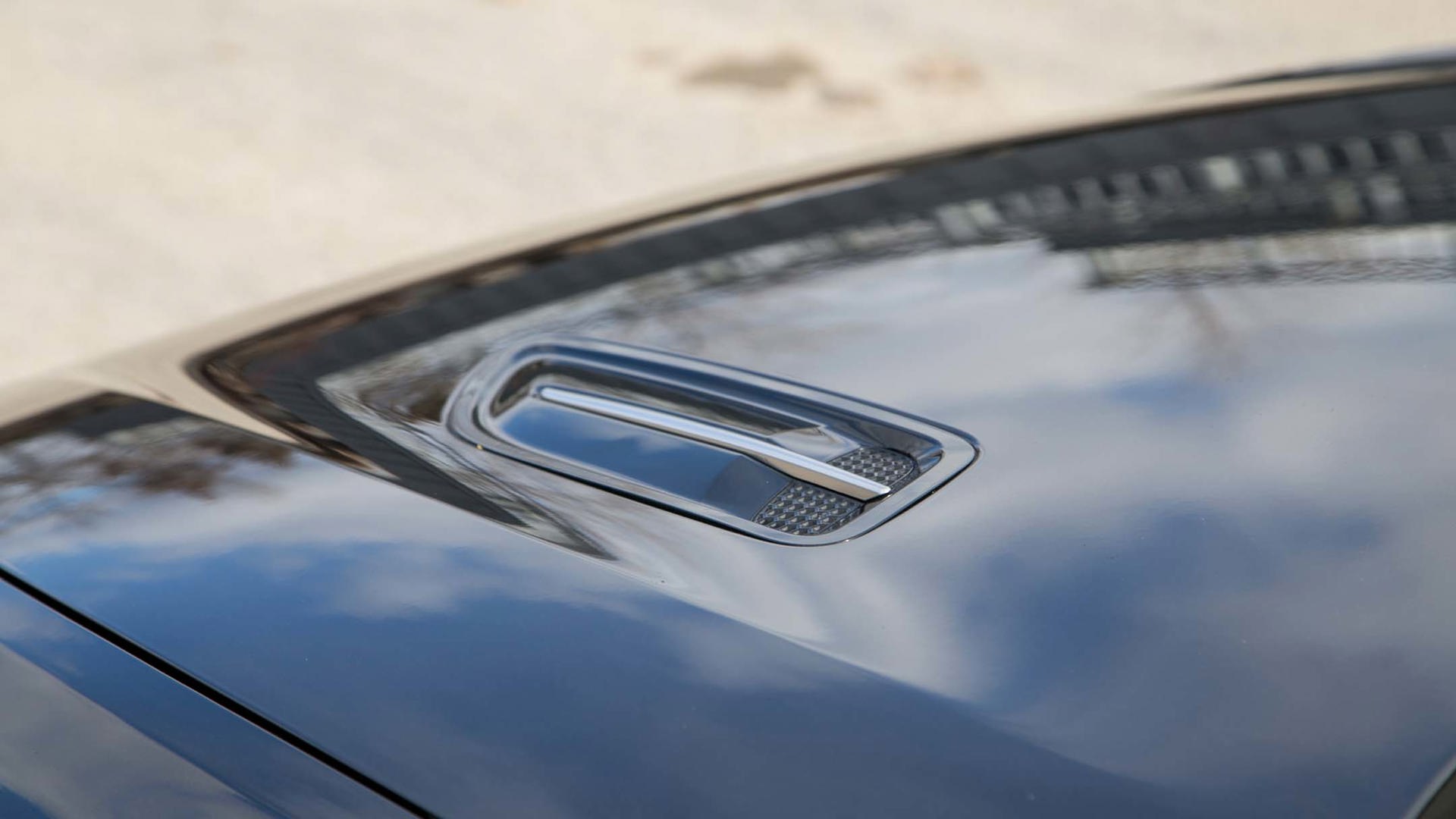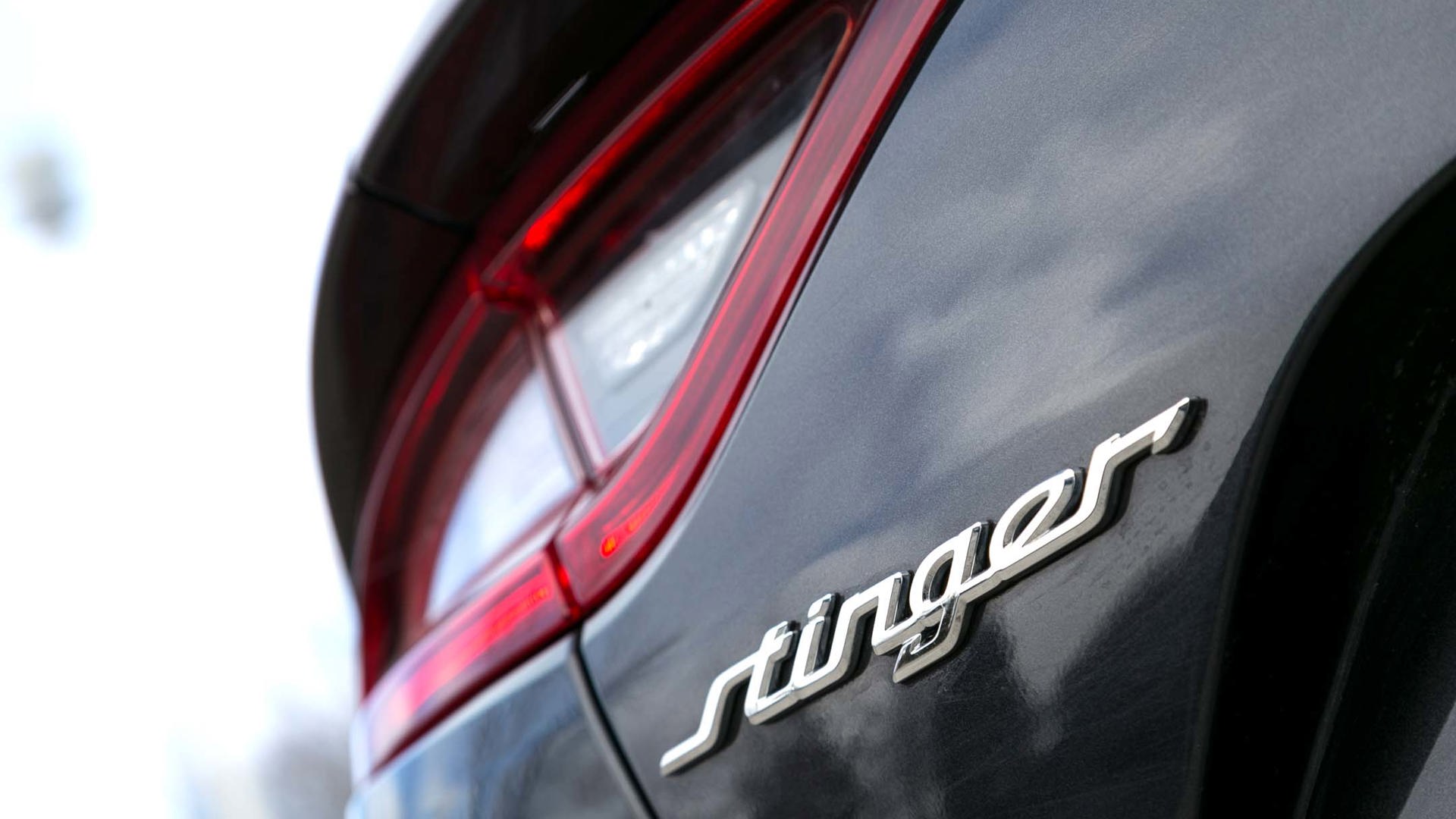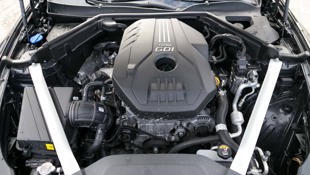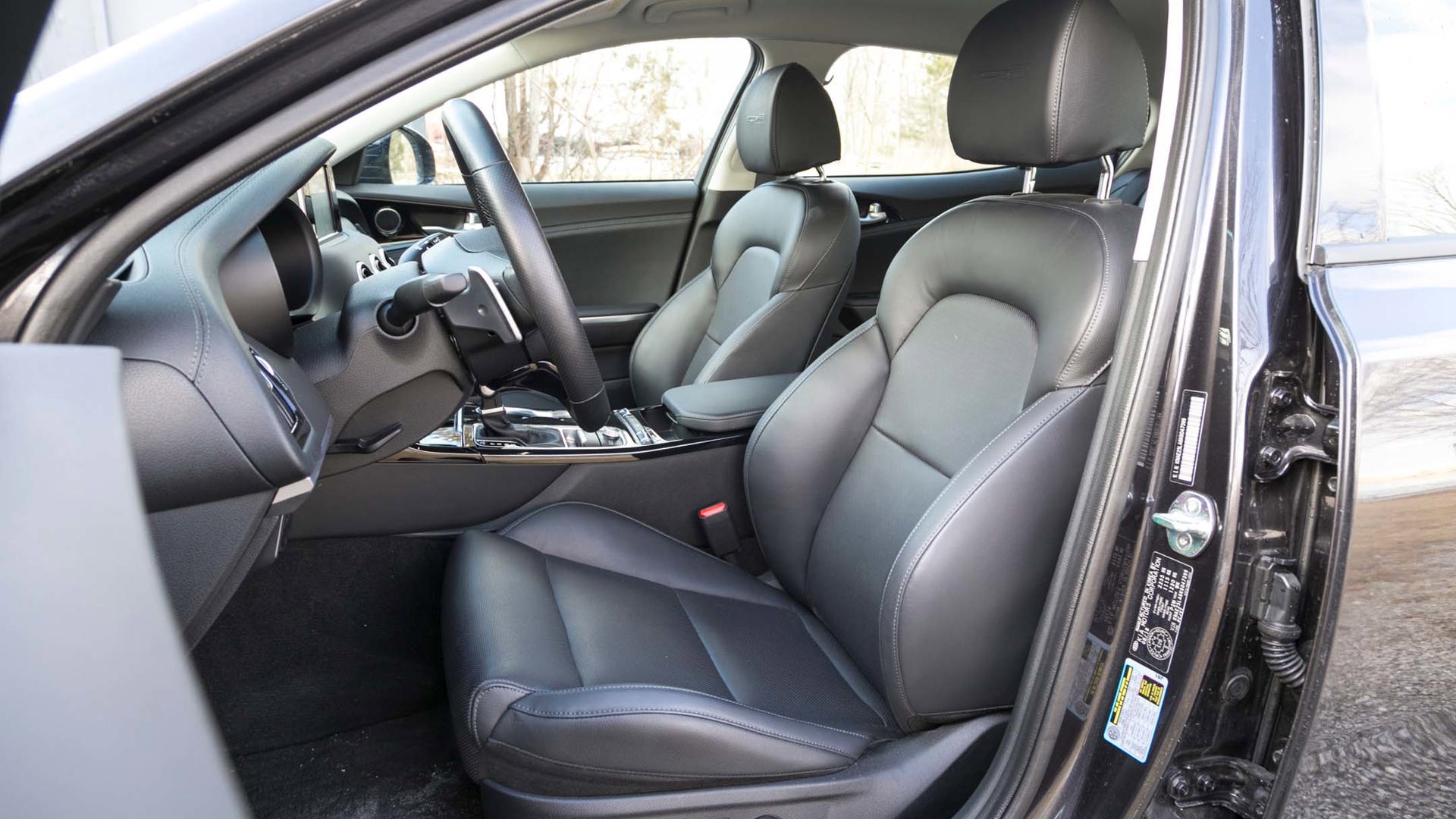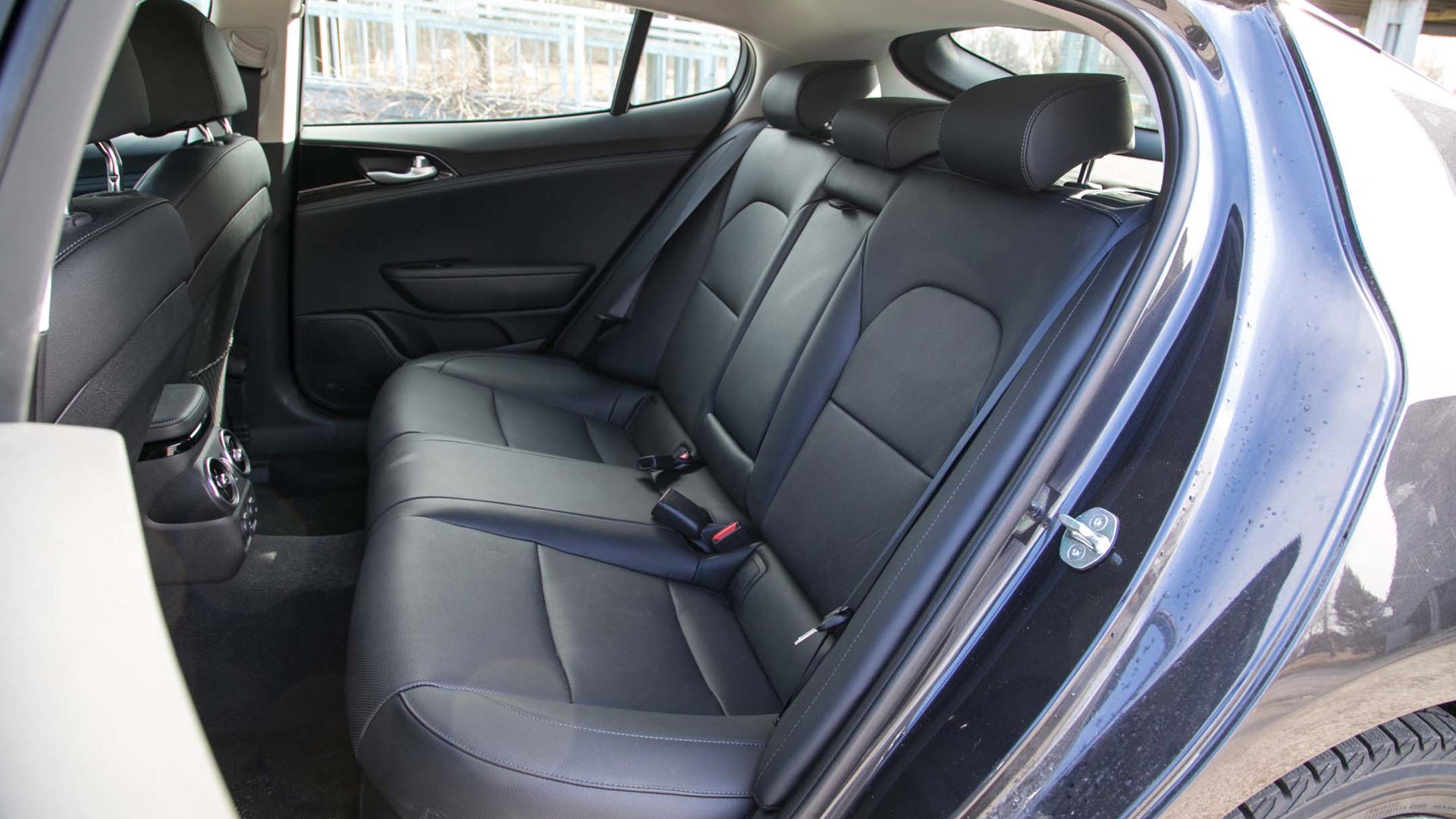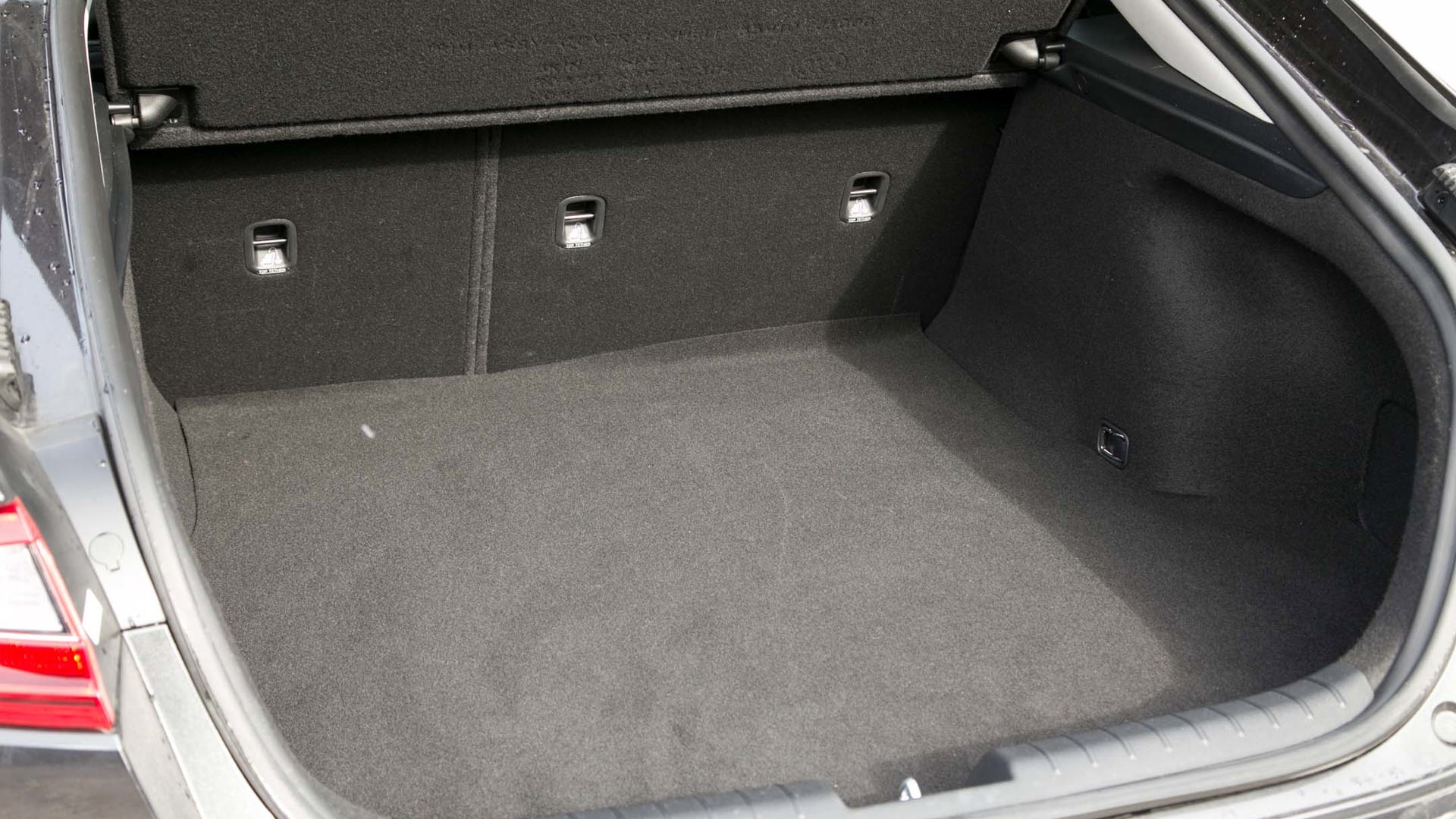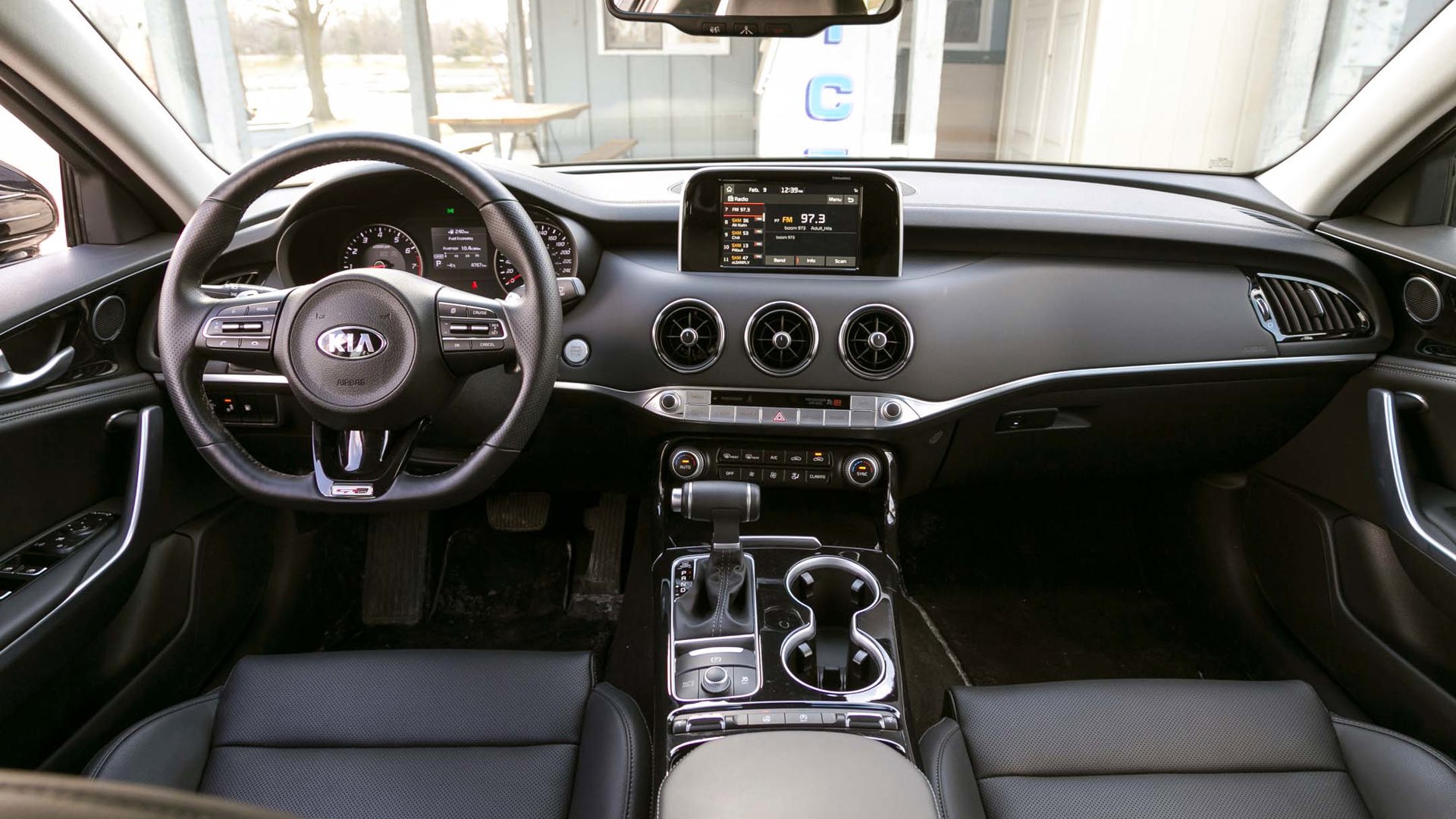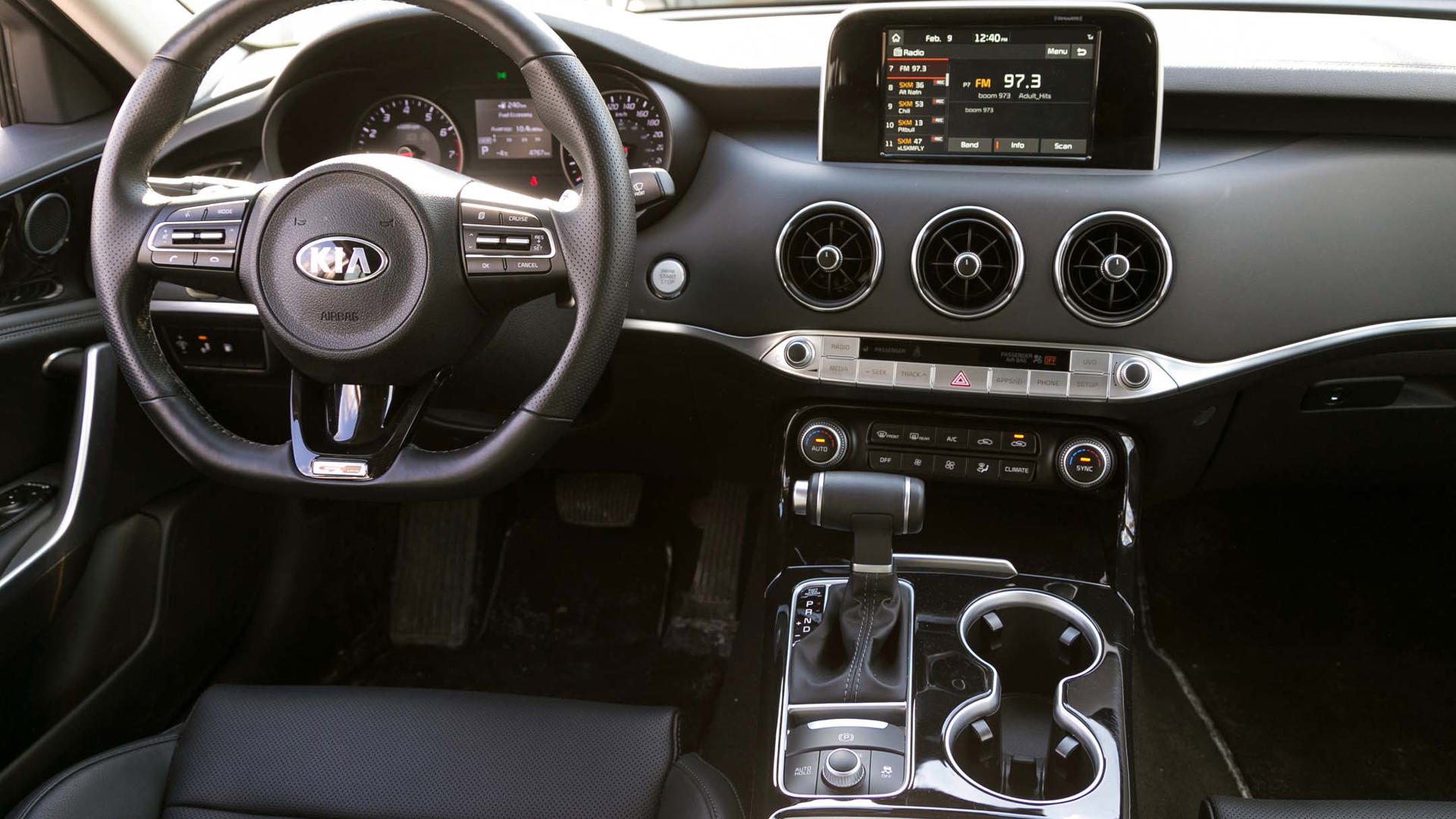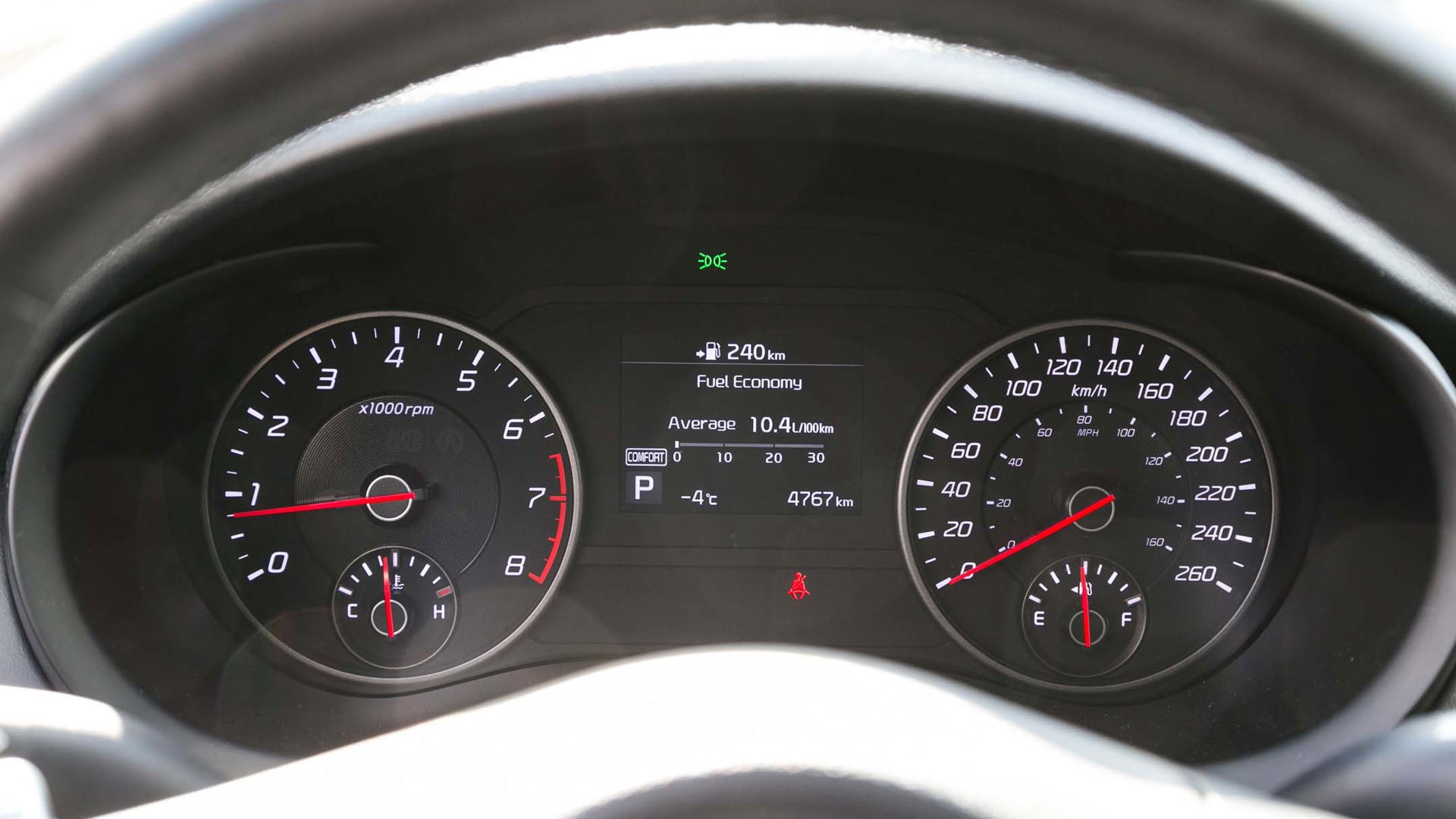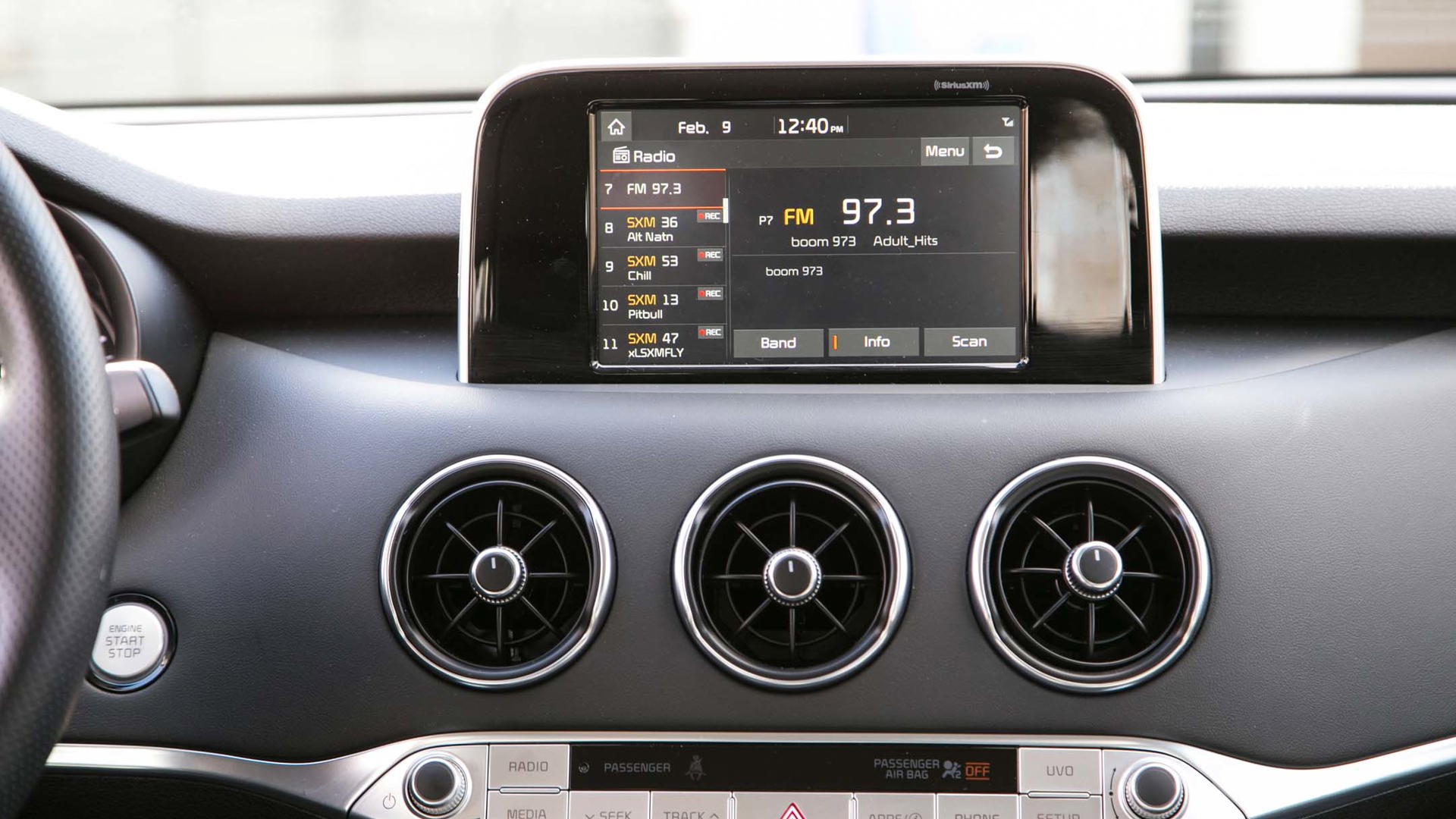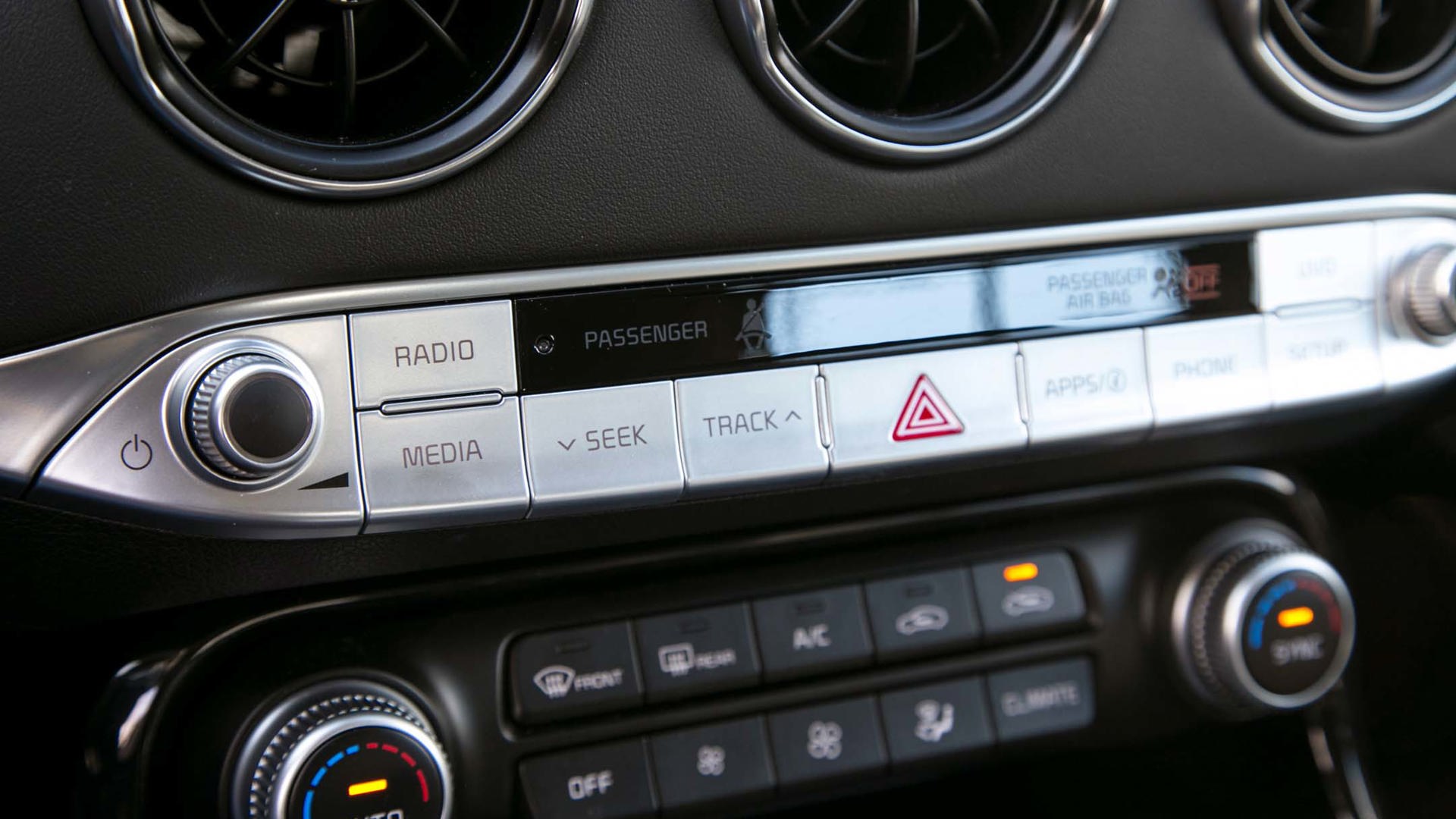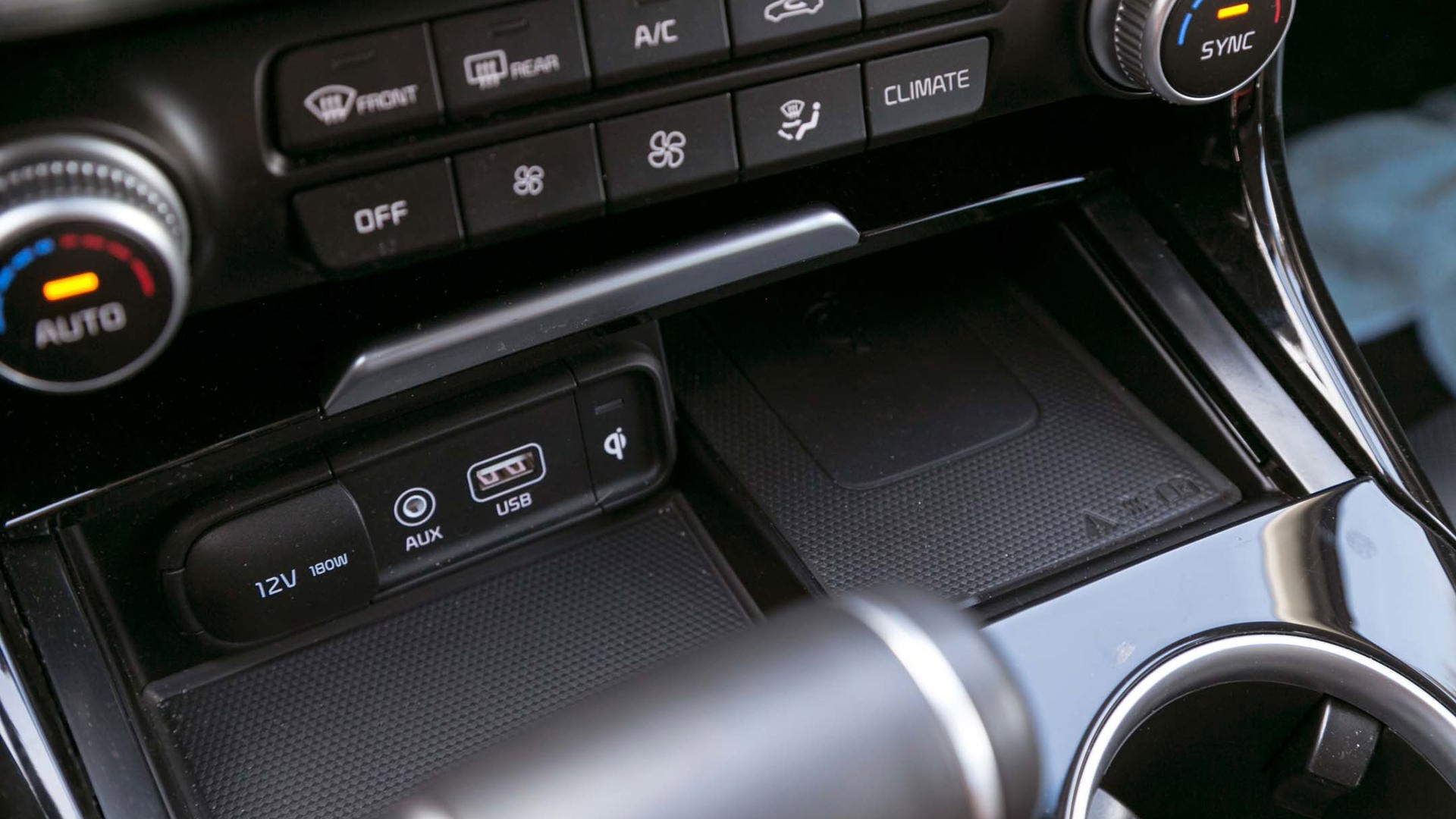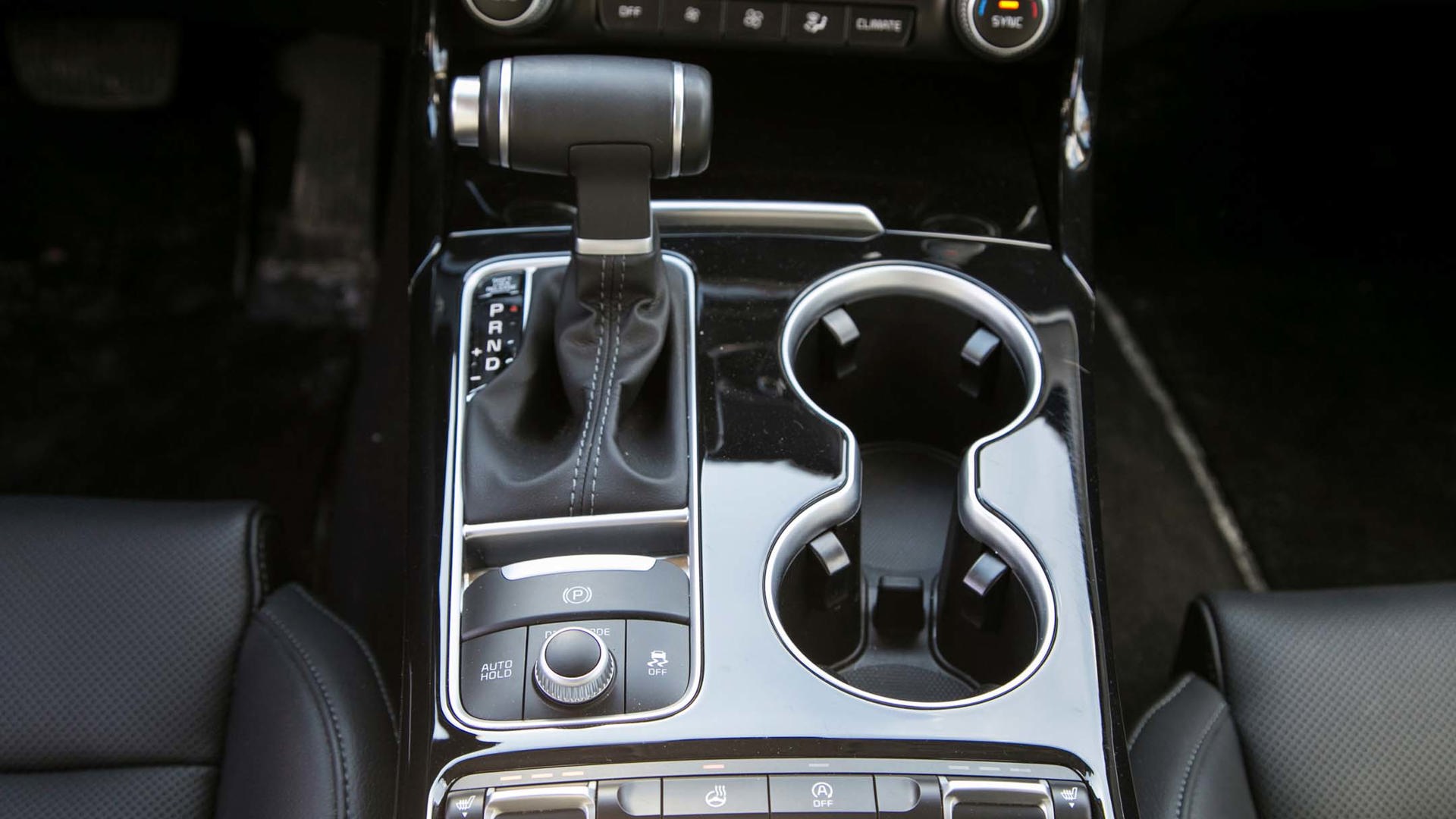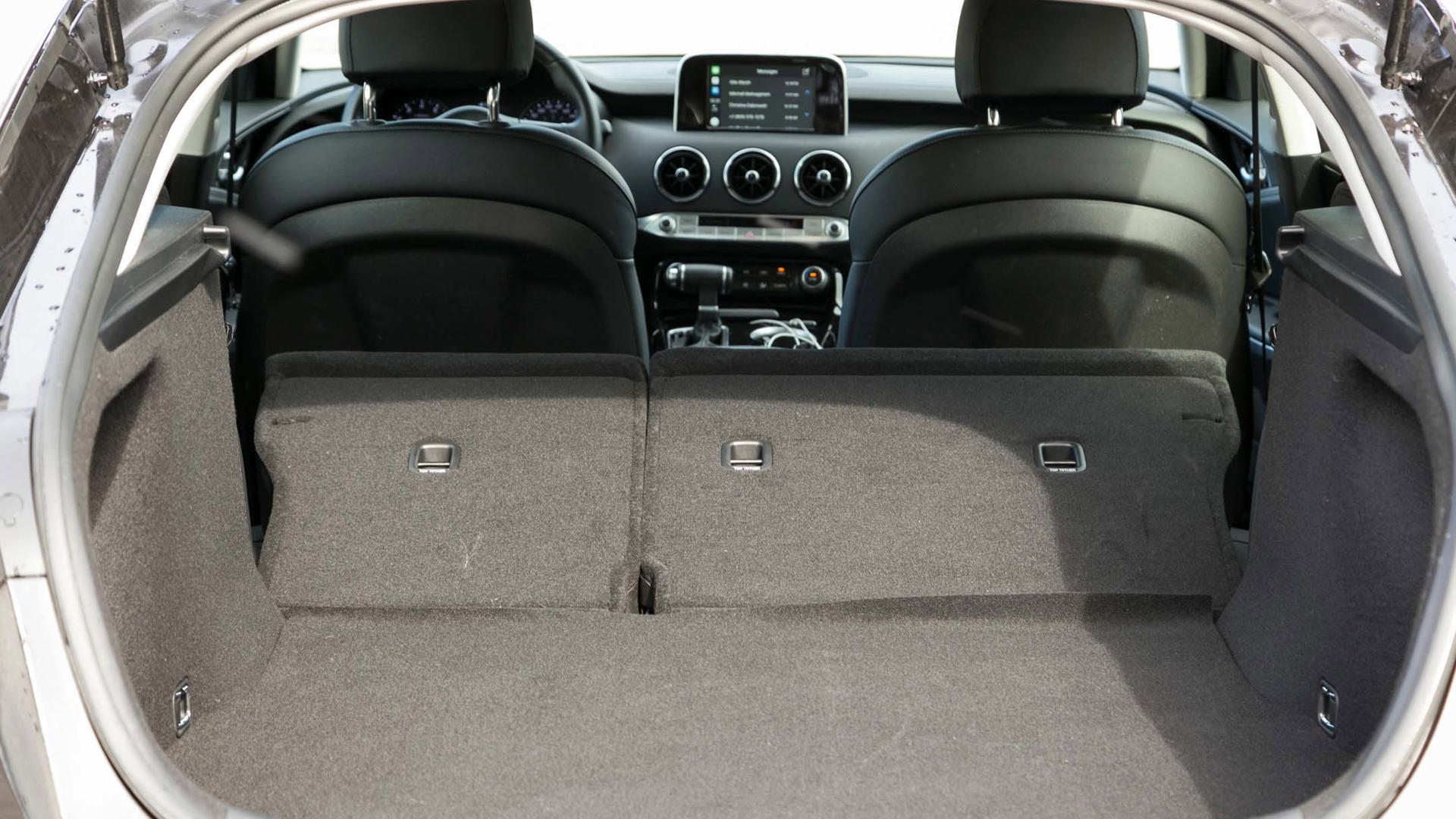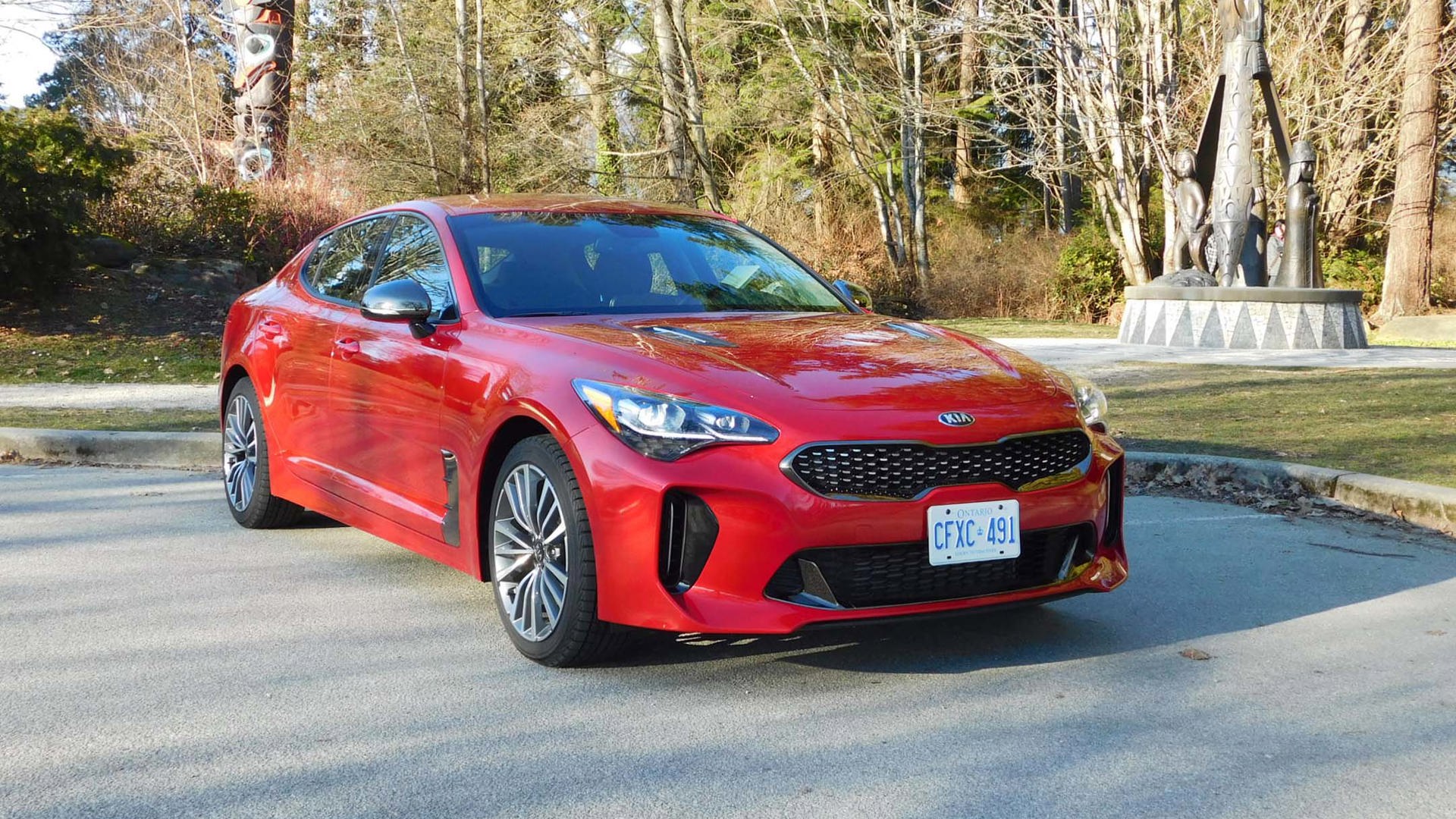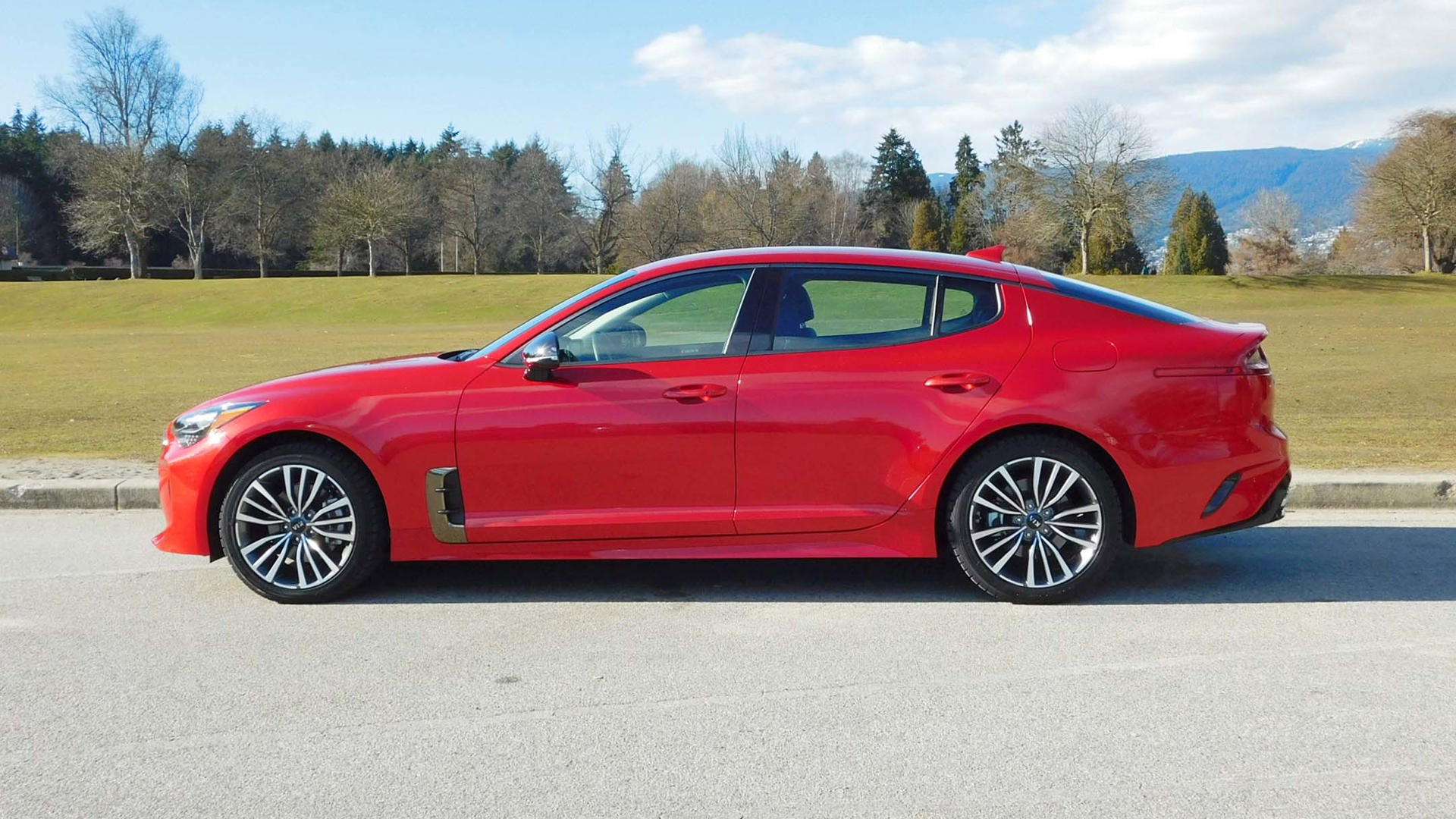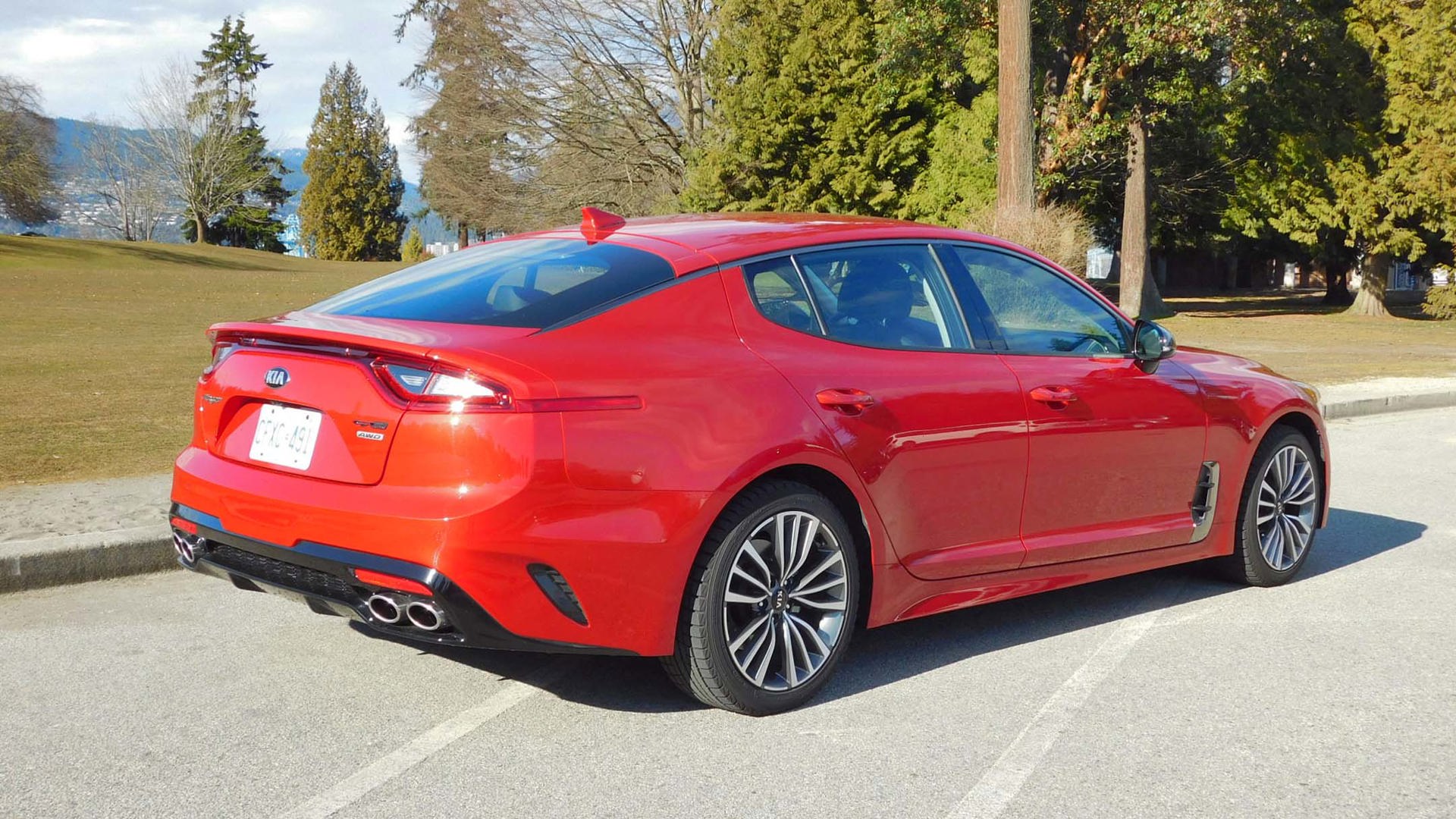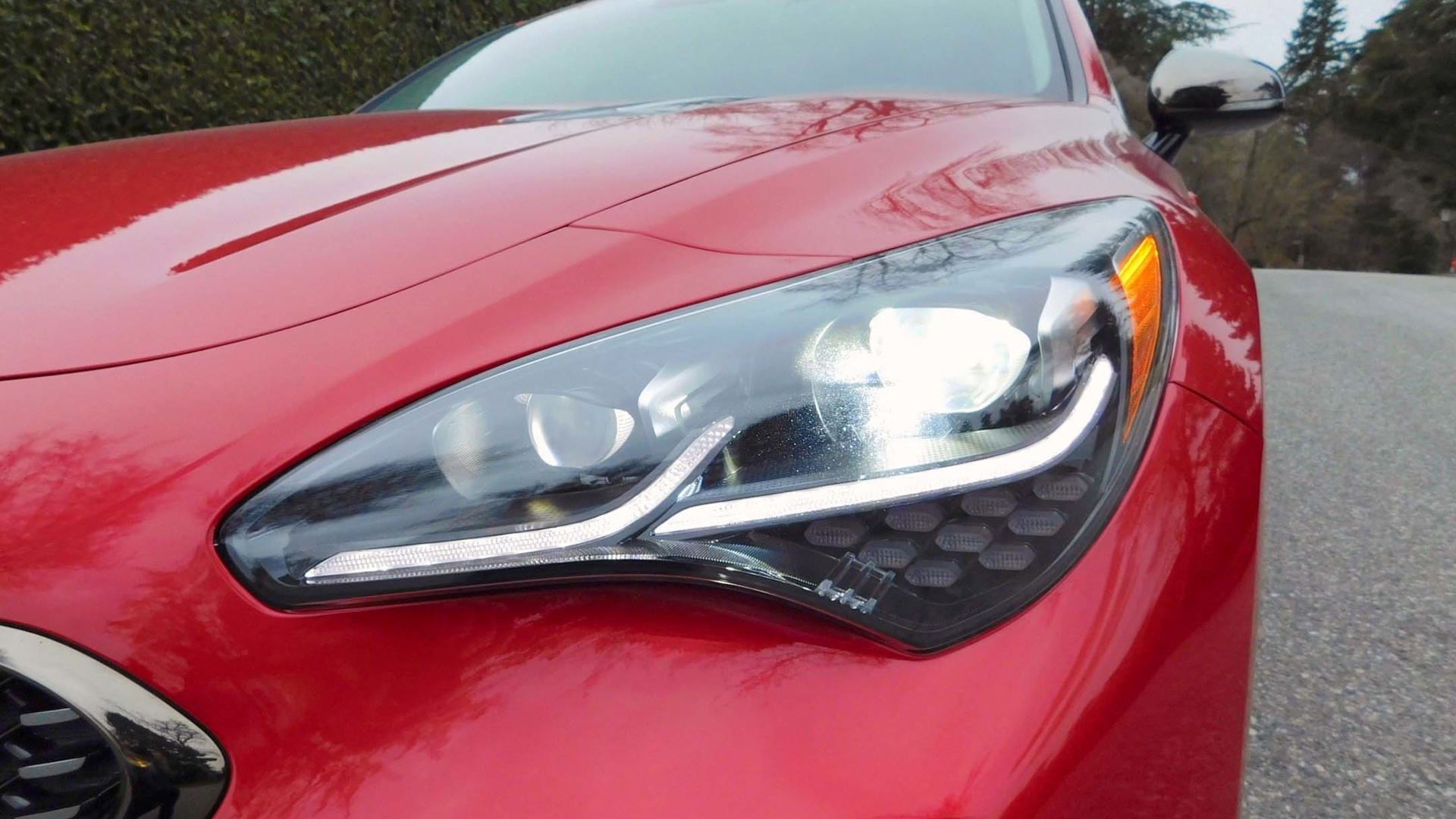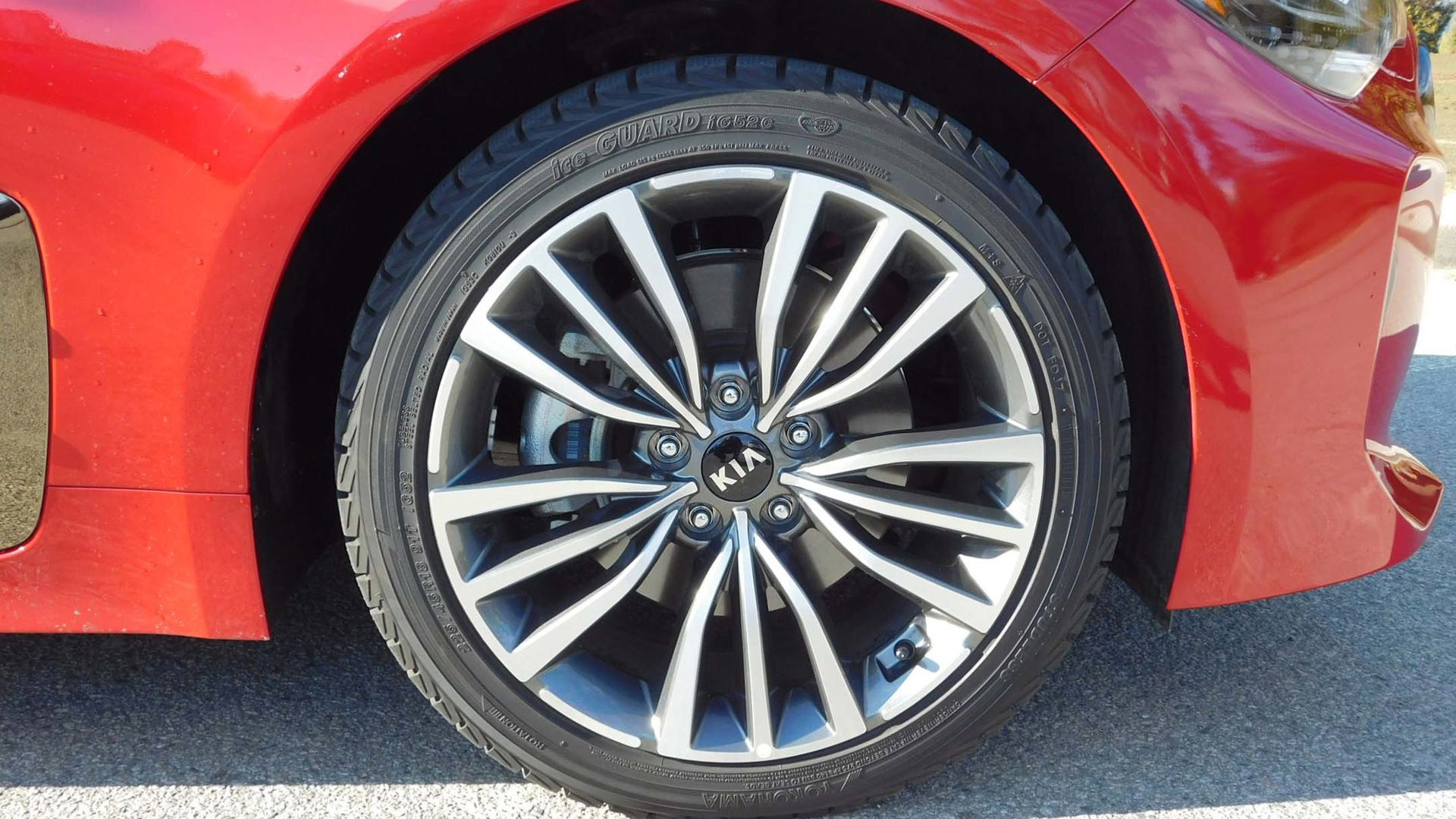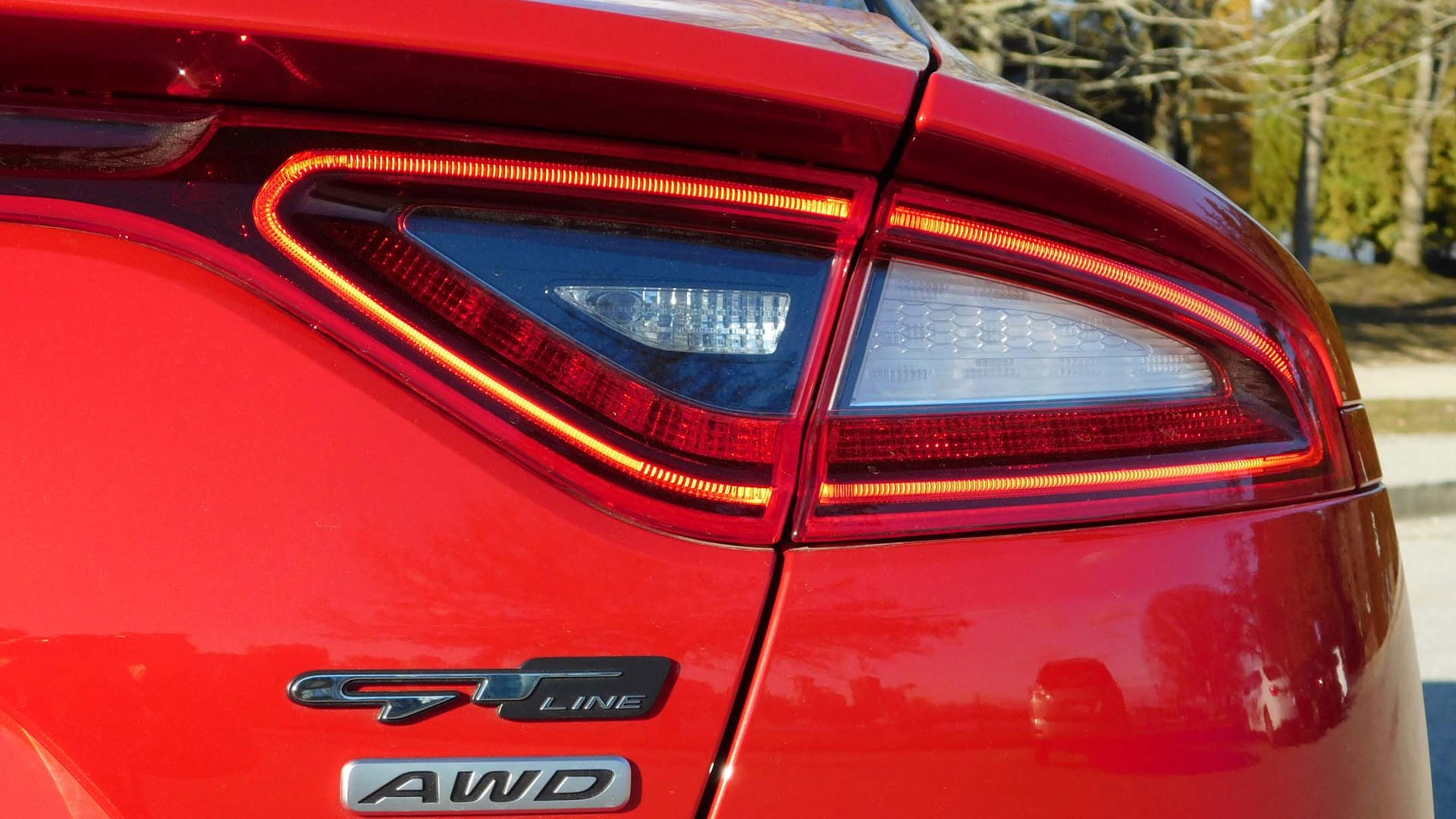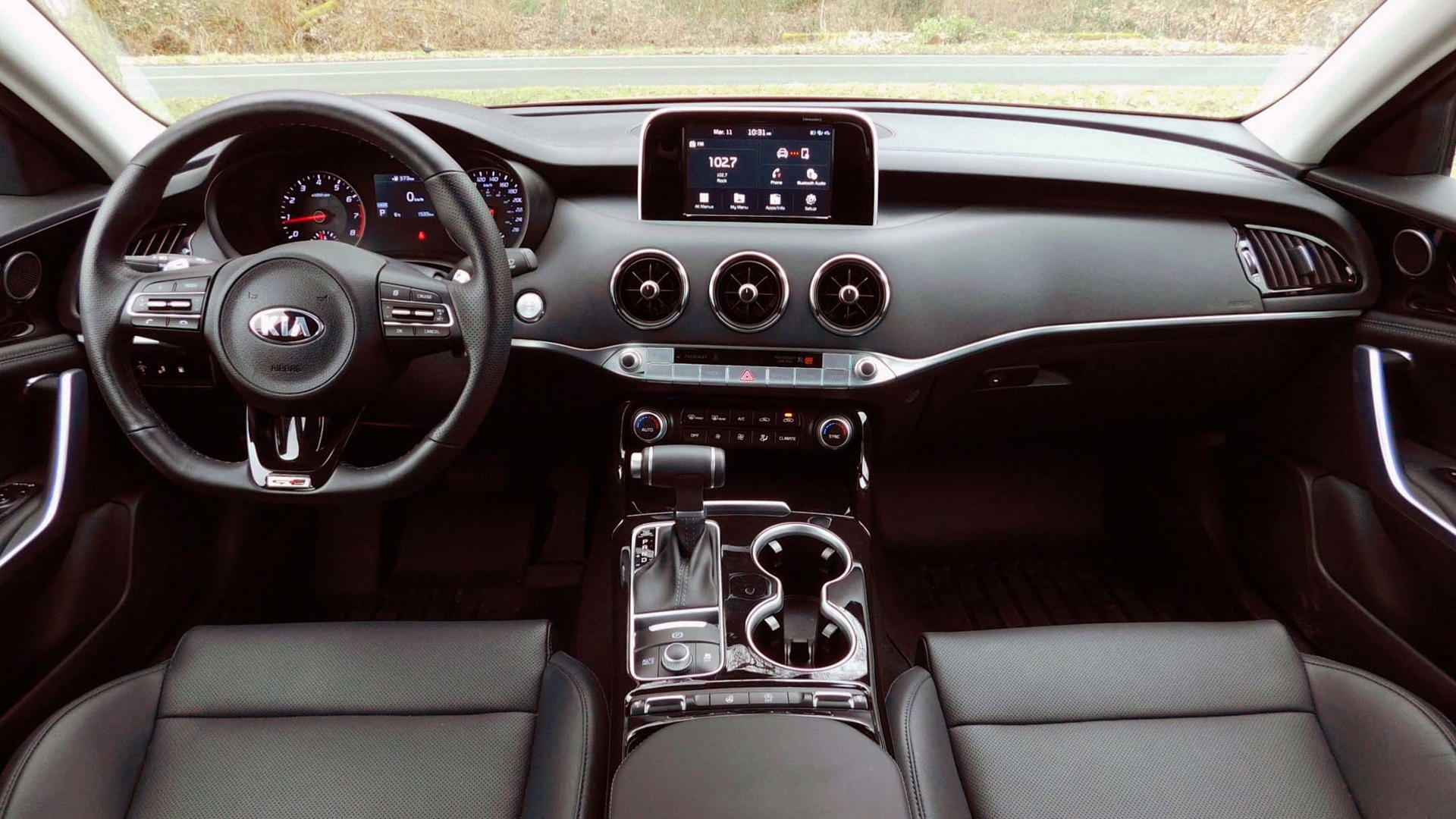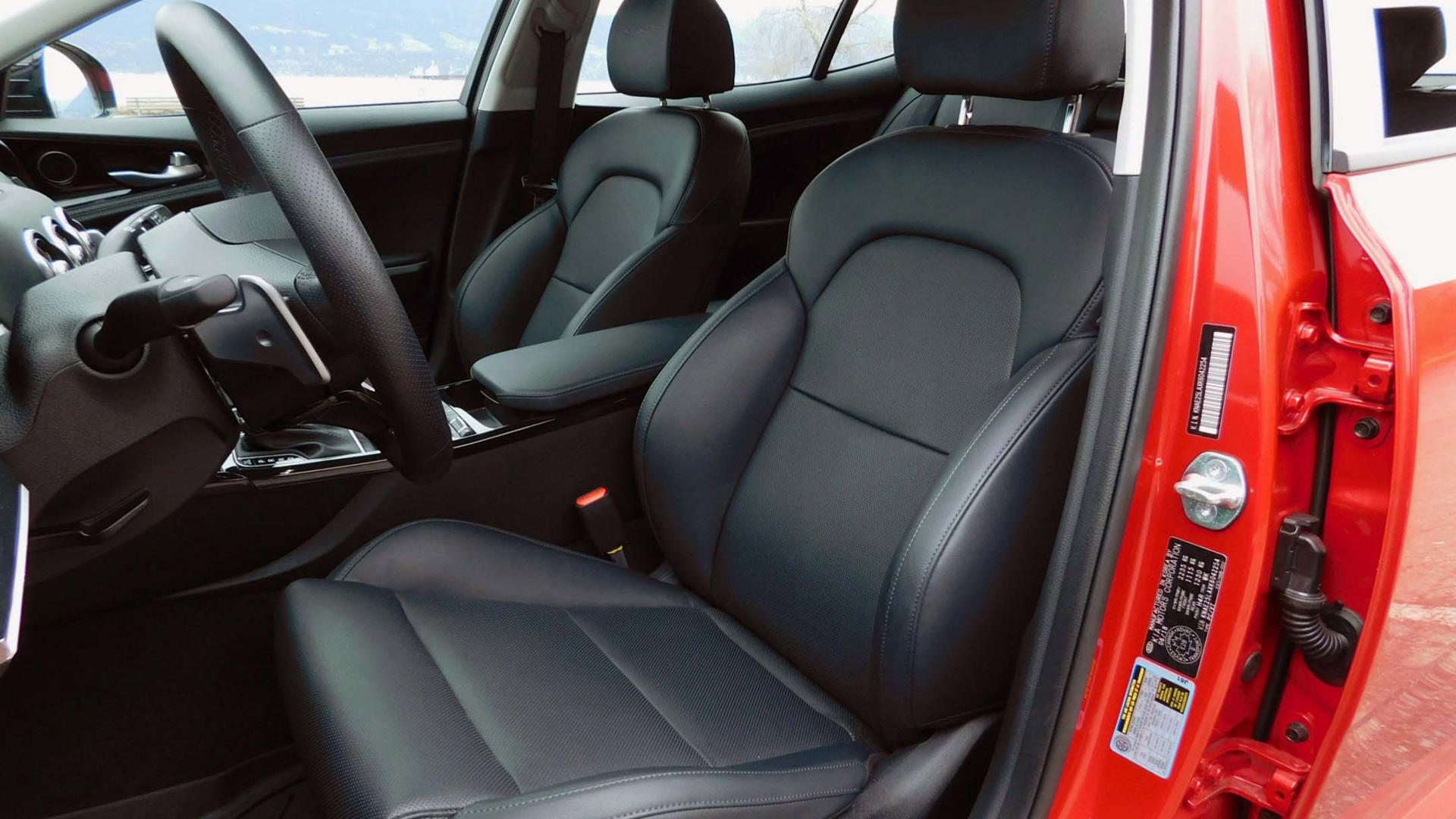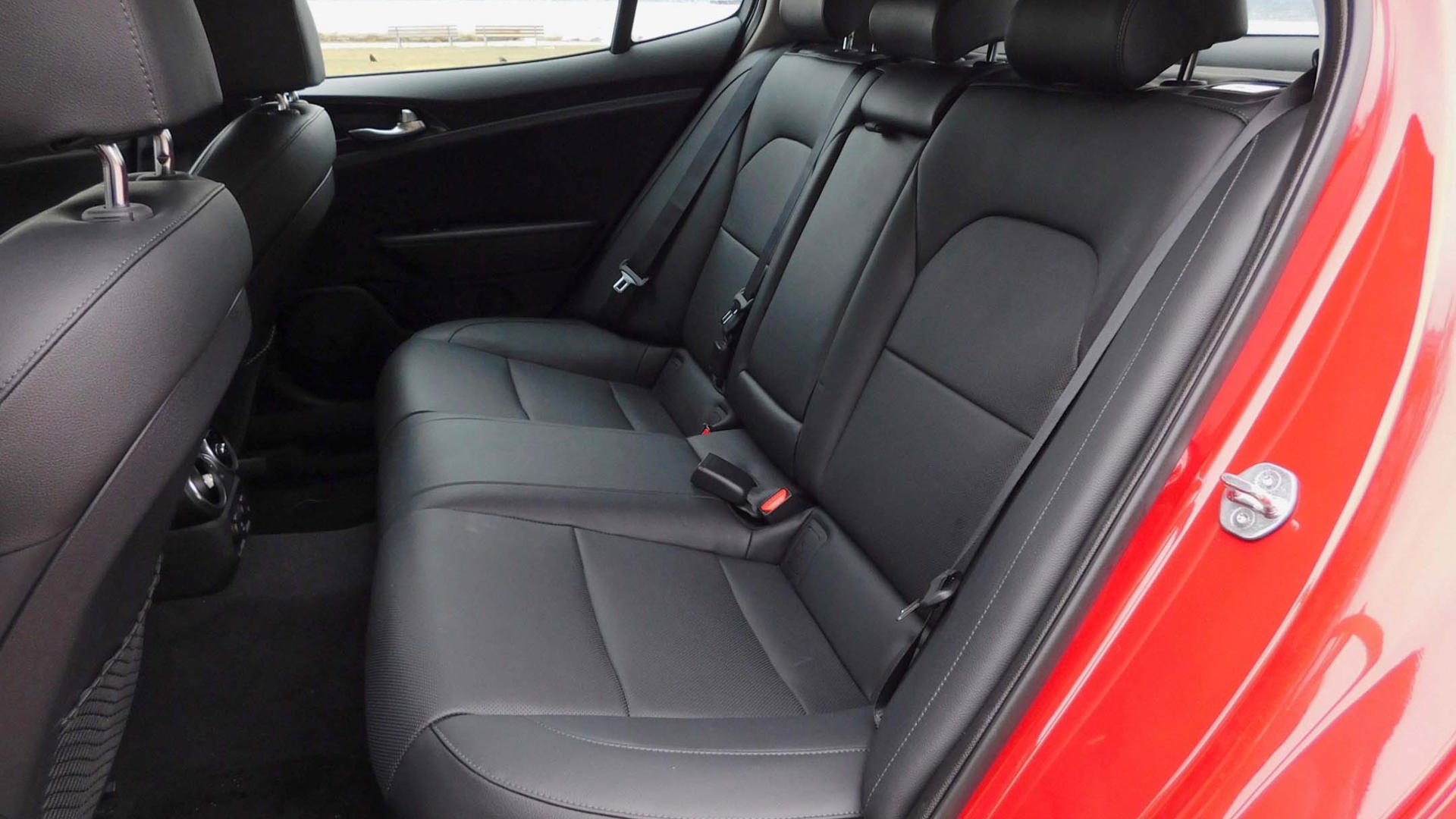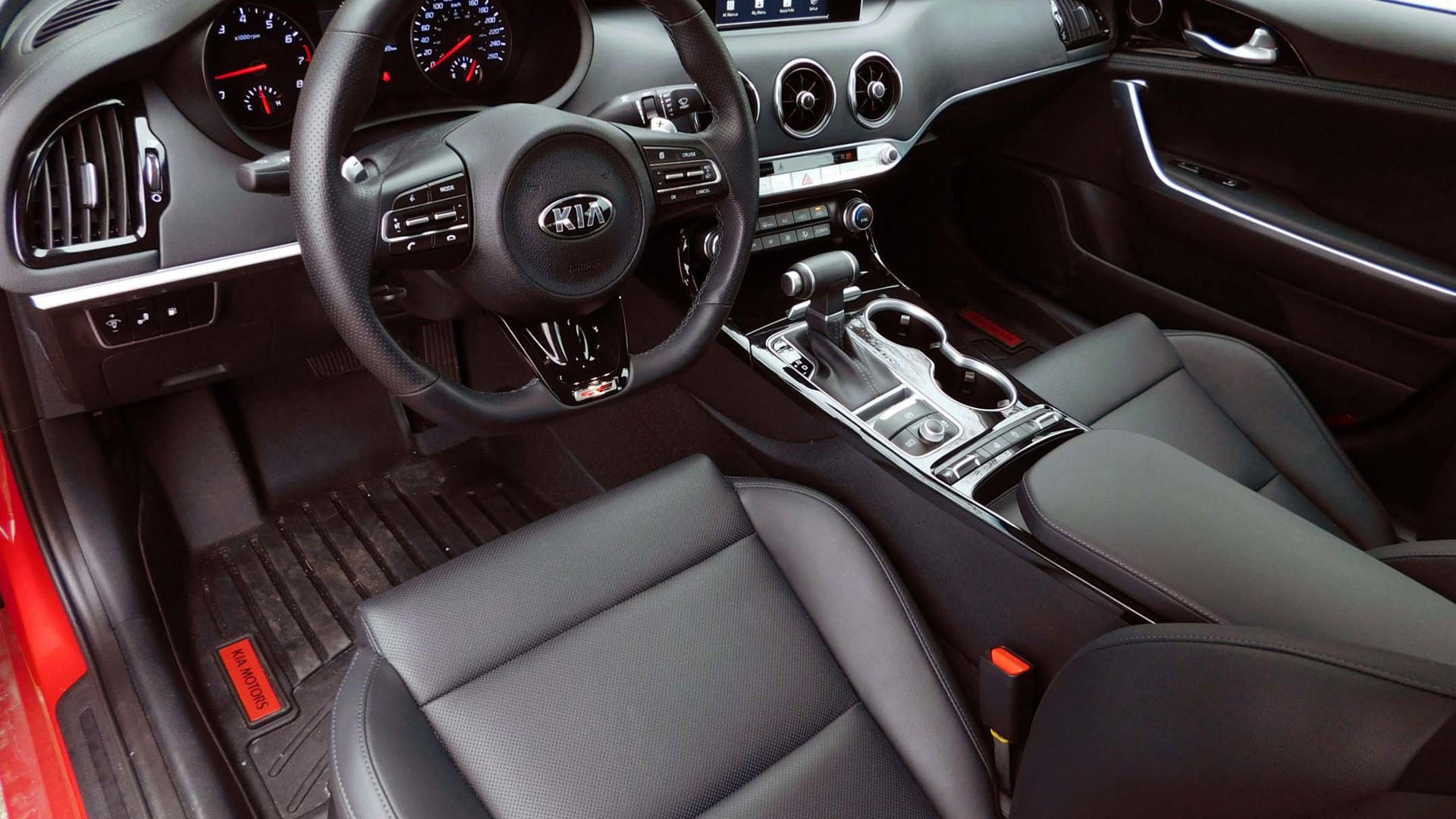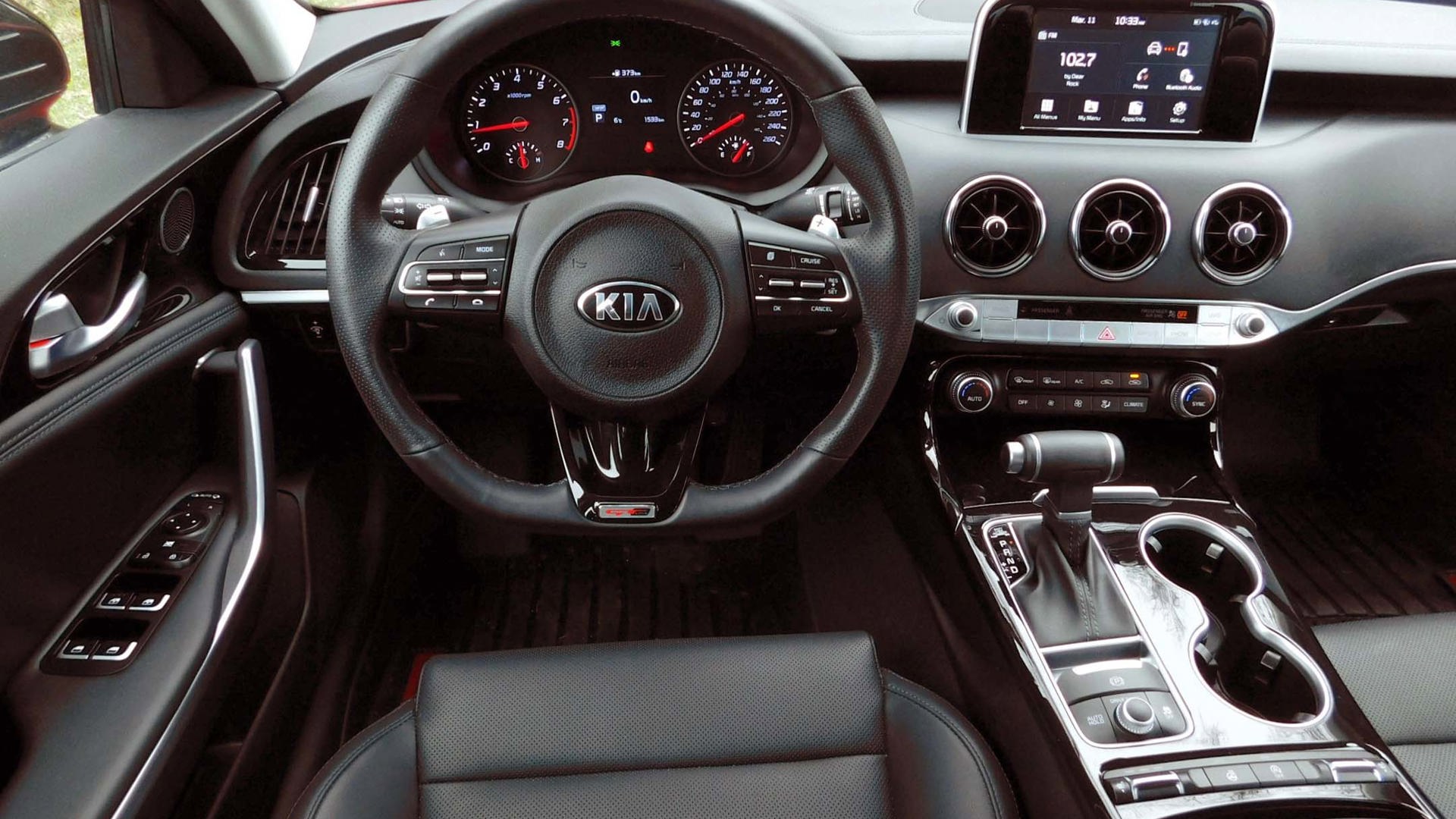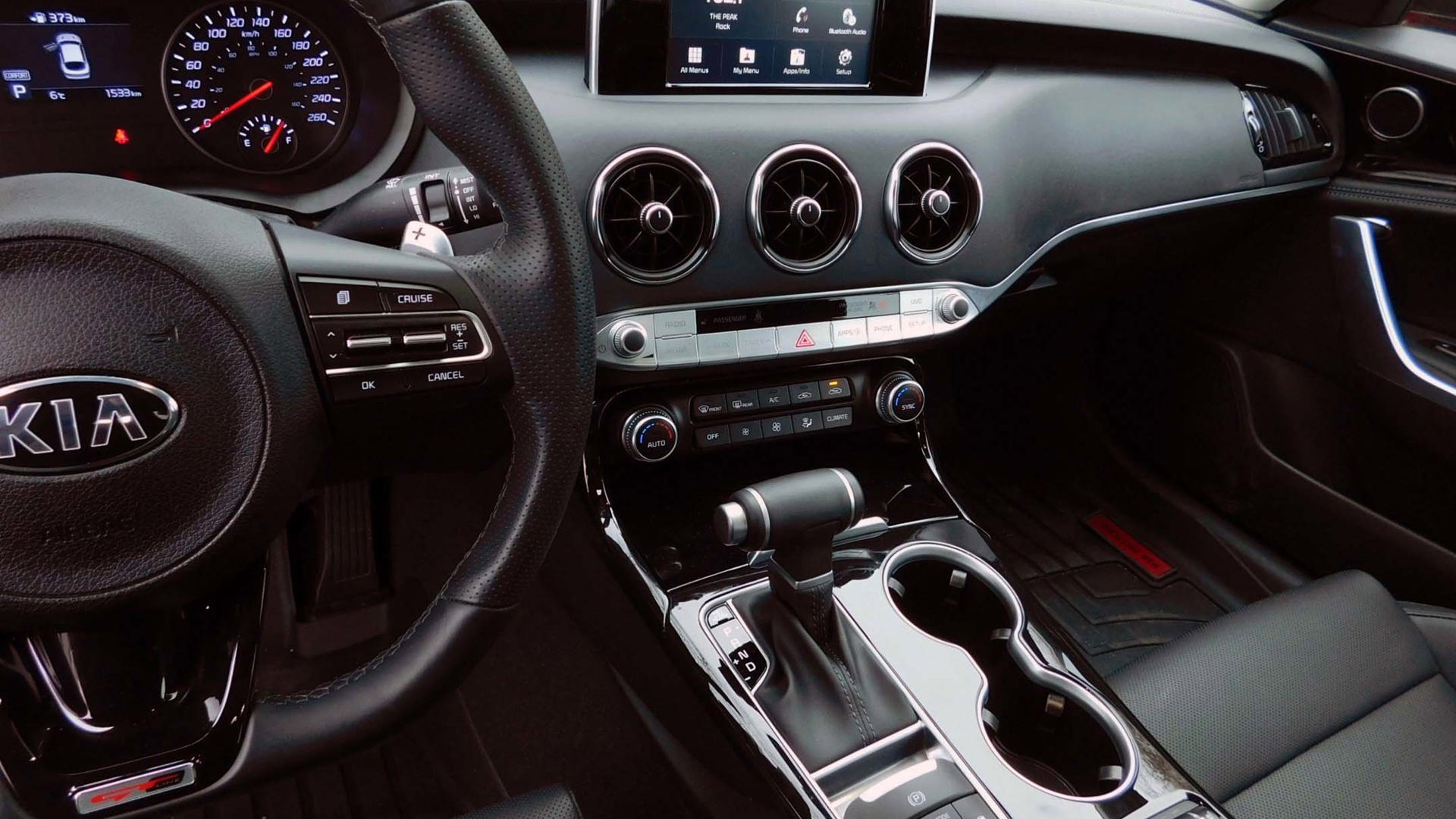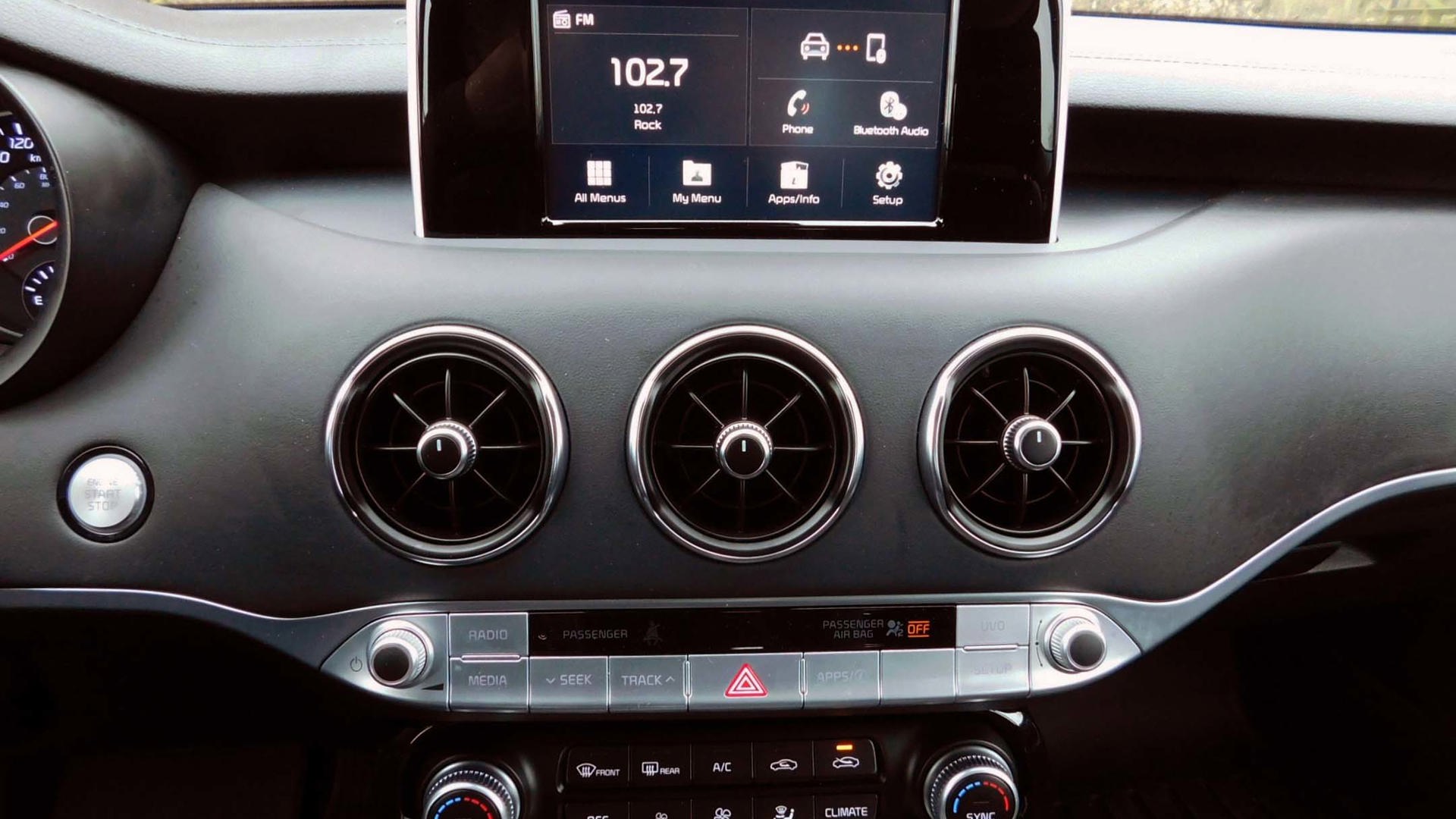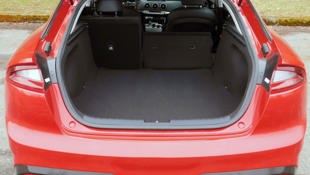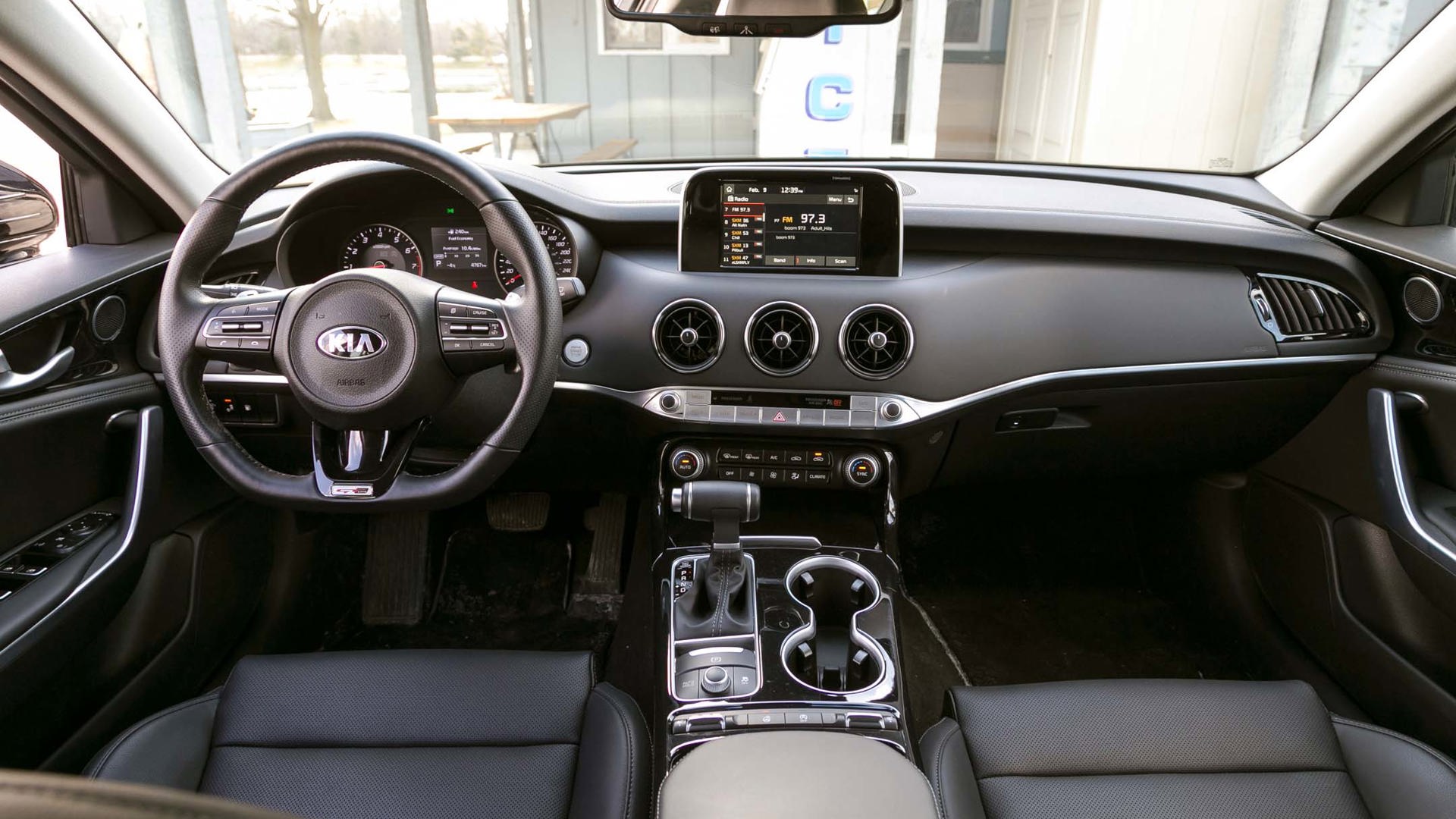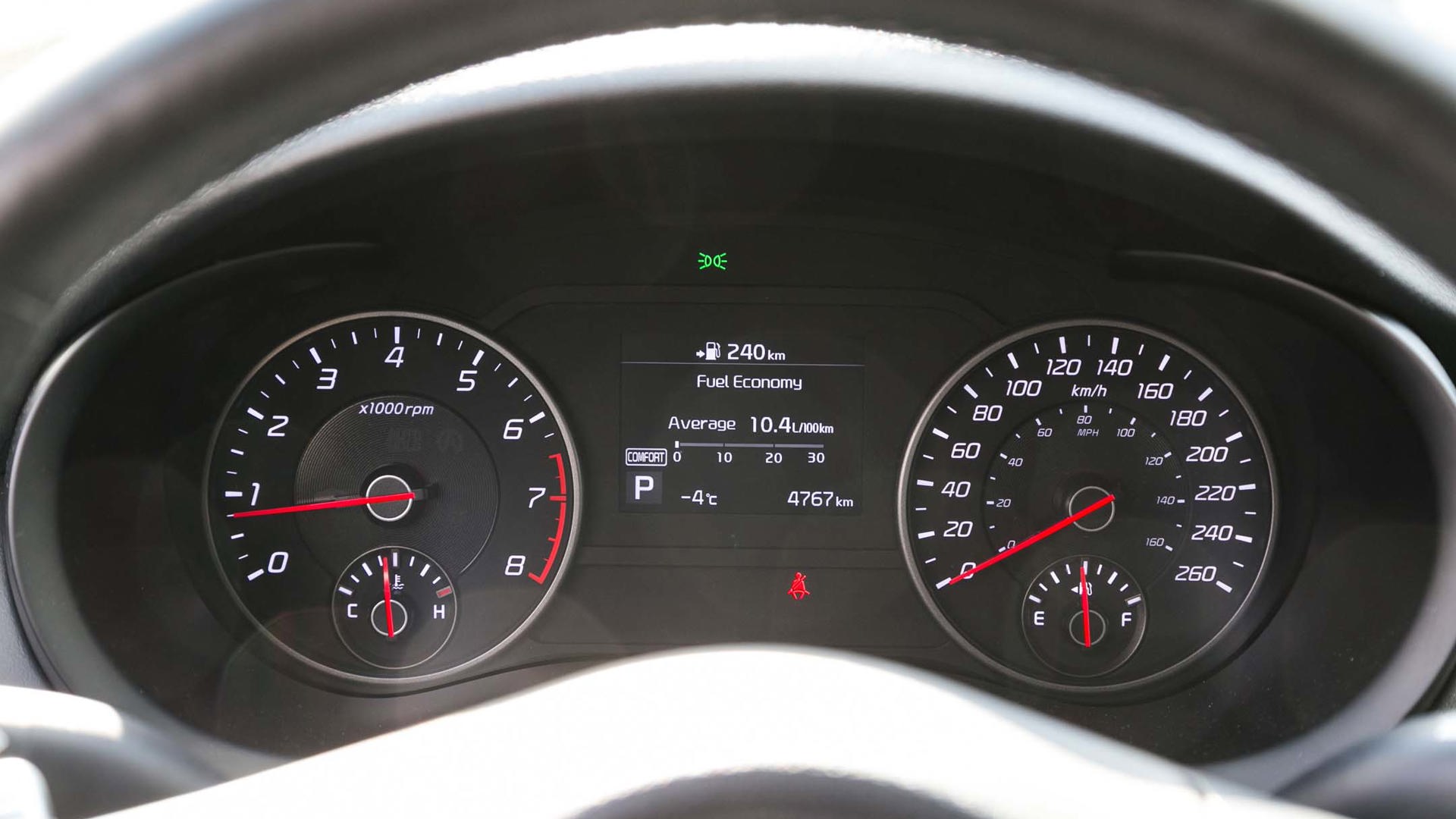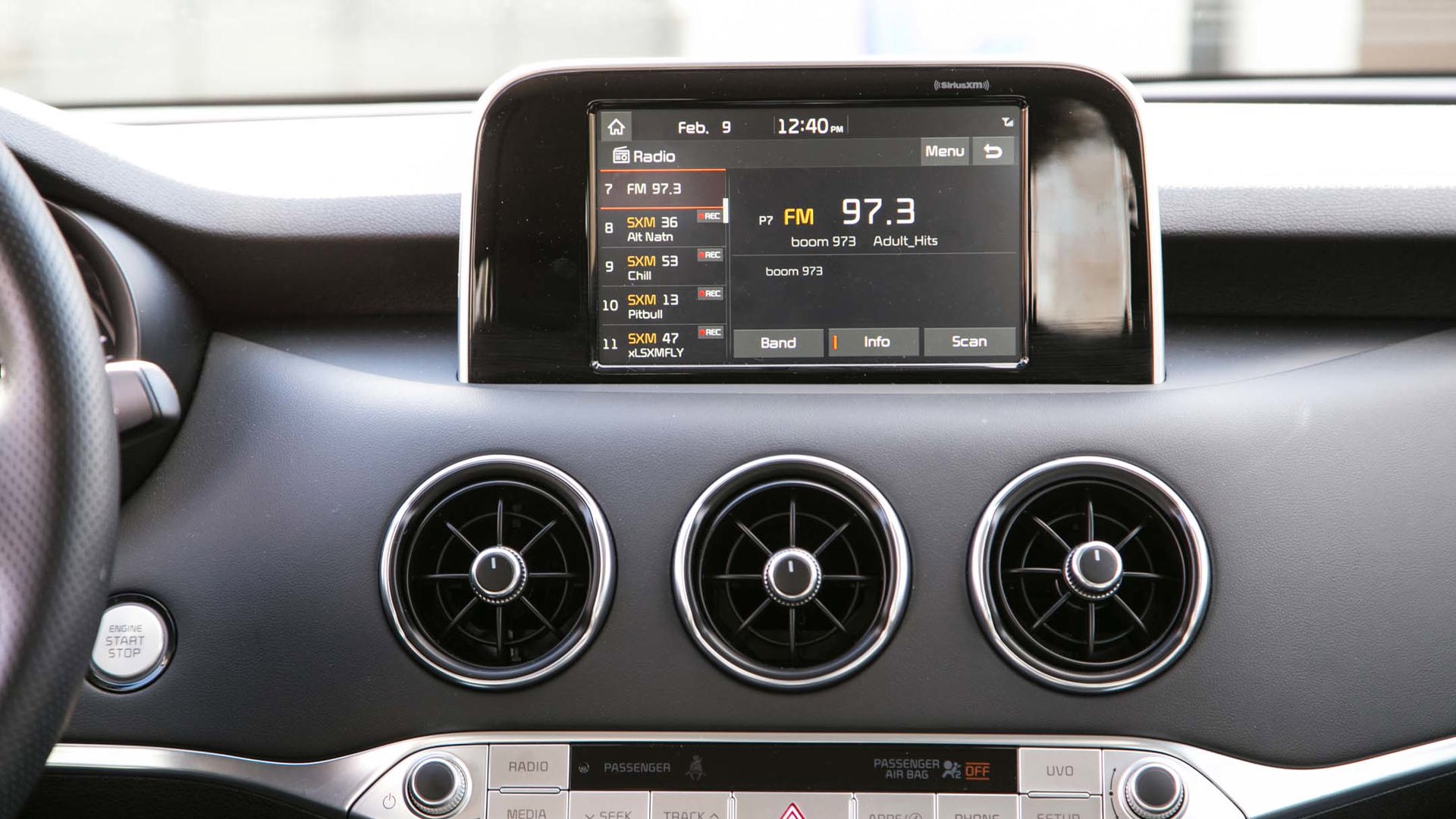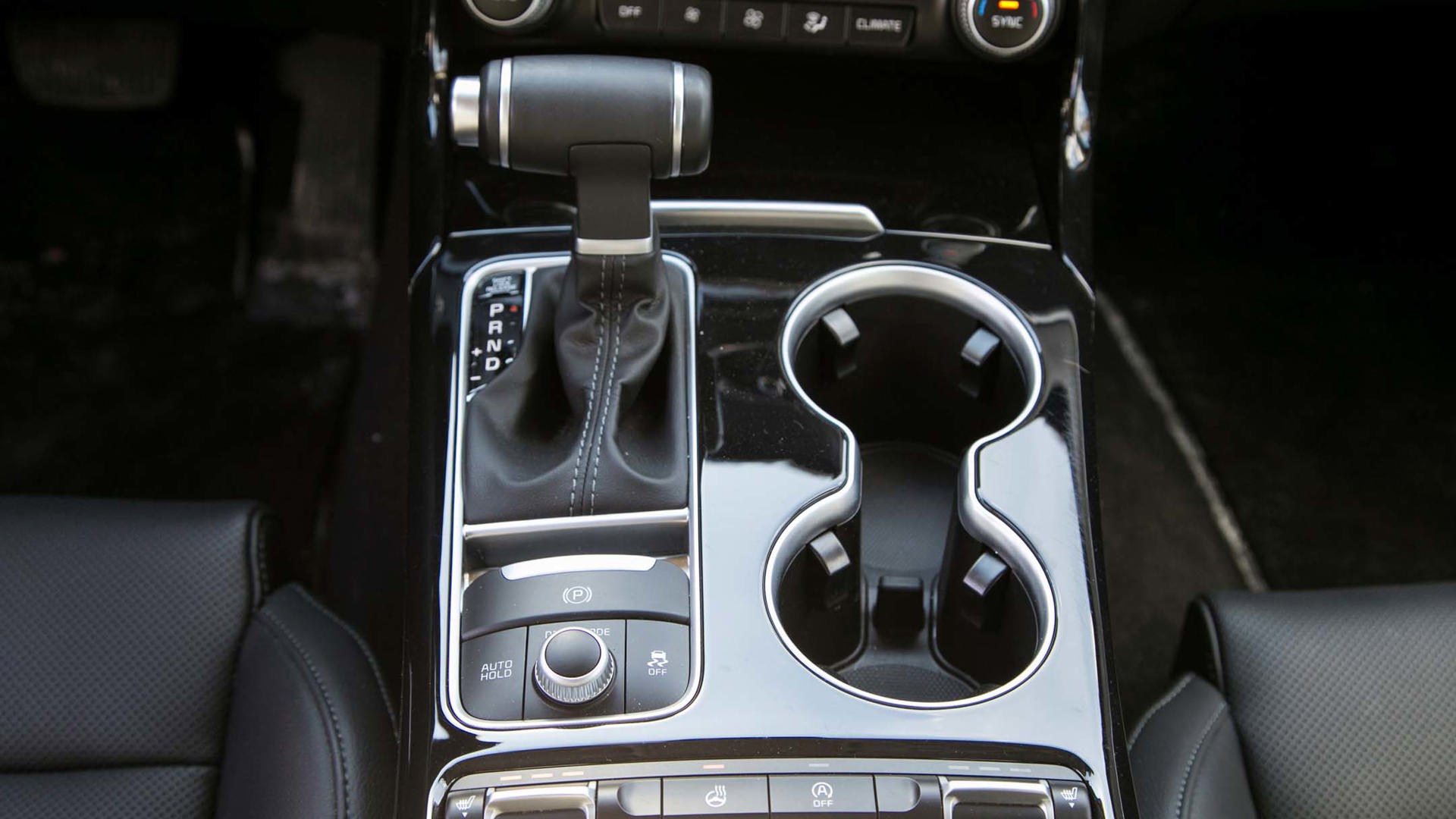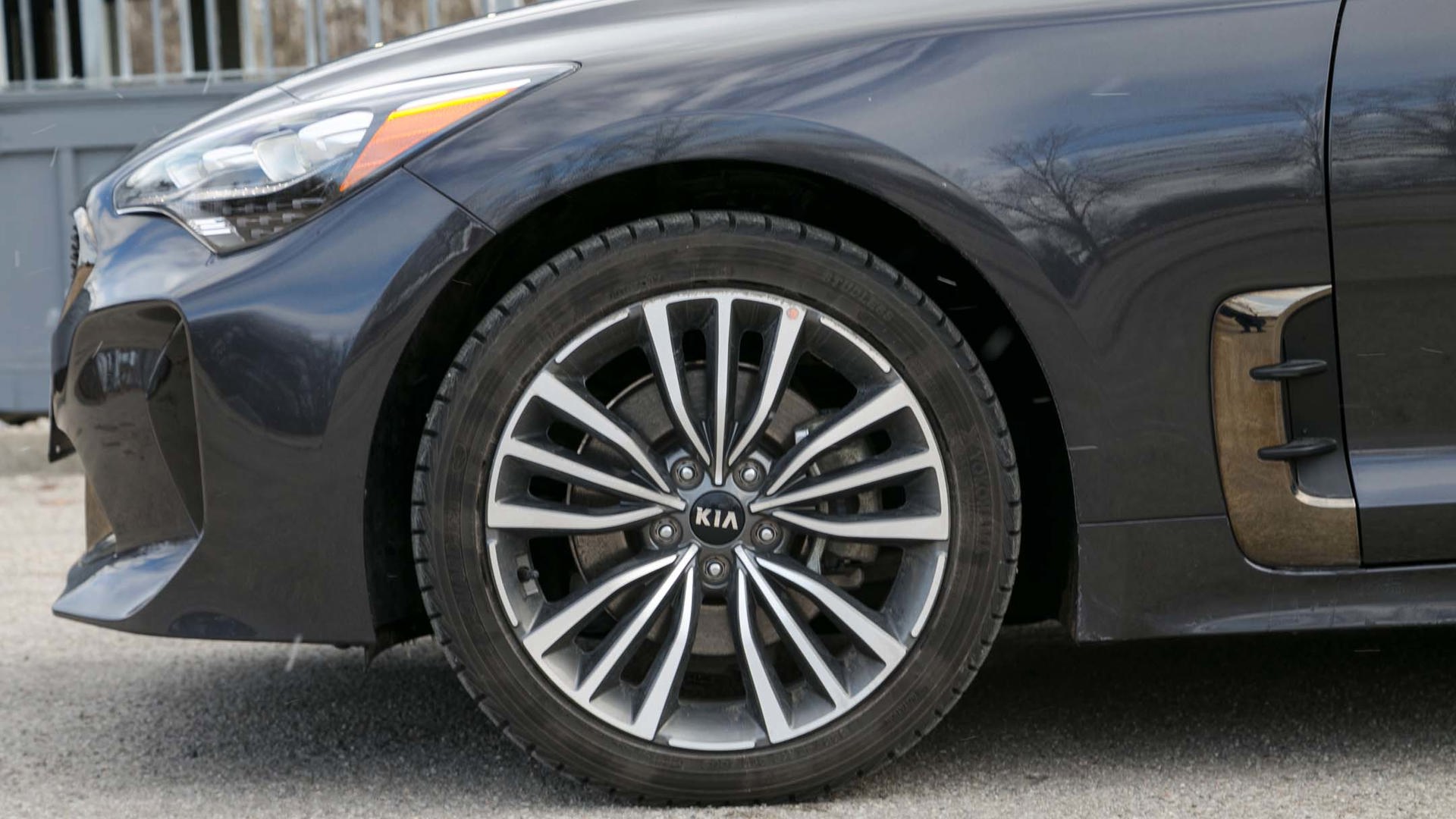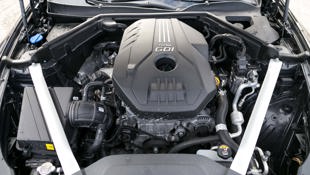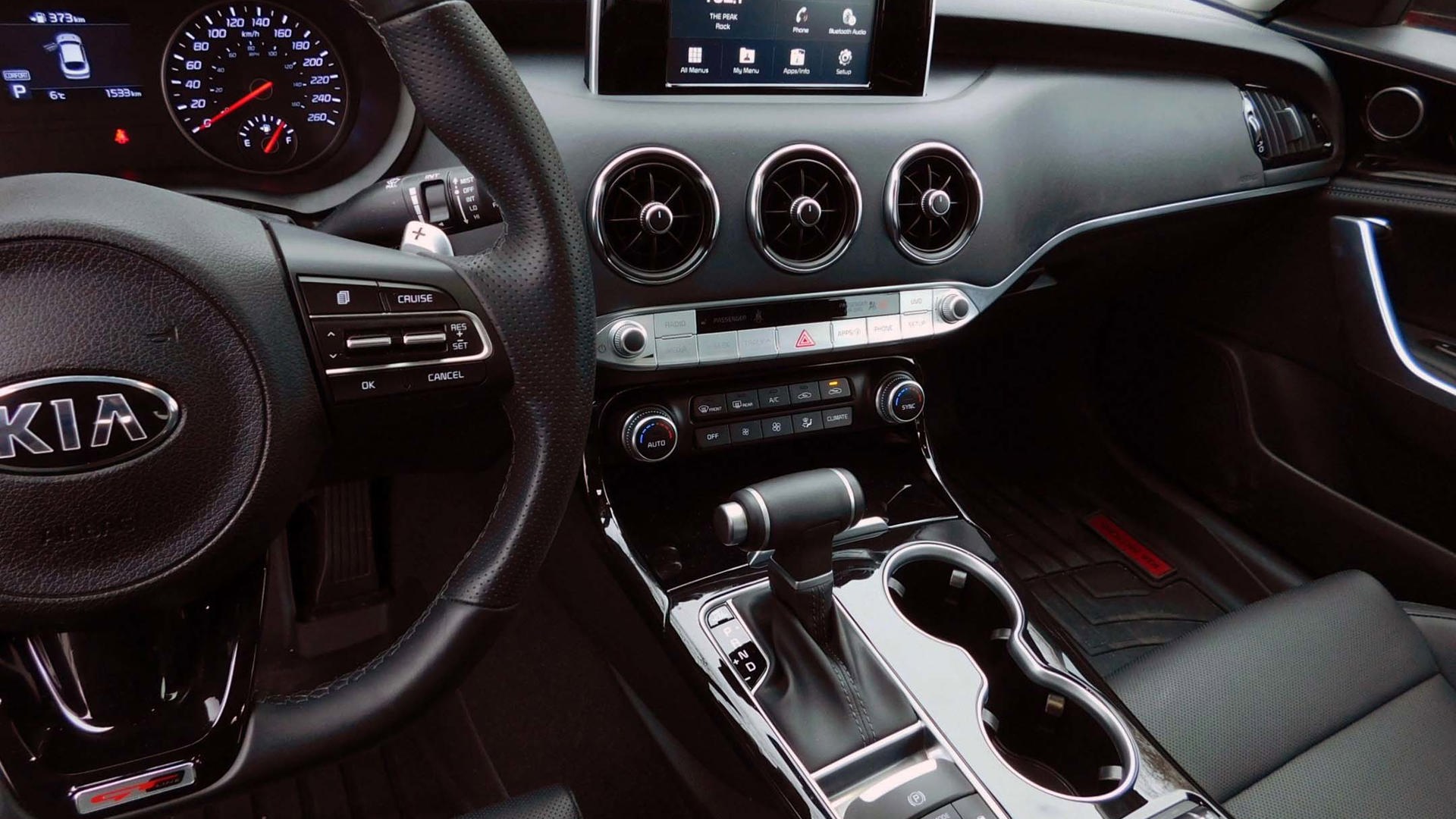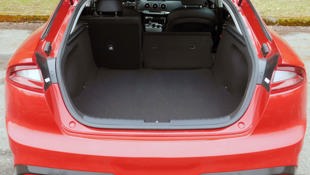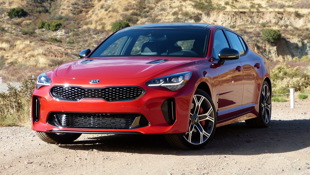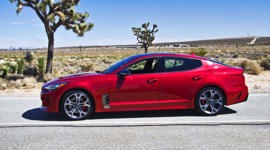Vehicle Type
Sports / Performance sedan
History/Description
With distinctive looks, twin-turbo power, and no shortage of the latest safety technology and performance chops, the Kia Stinger hit Canadian roads in 2017 with its sights set on shoppers after an upmarket performance car without the price tag to match.
All models sport four doors and seating for five, with a liftgate-style hatch and low-slung seating position. Tuned for the enthusiast driver, the Stinger aims to deliver a pleasant and relaxed highway drive, while flaunting enhanced sportiness and response when called upon.
The all-wheel drive (AWD) system works flawlessly for winter driving, making the Stinger a year-round performer that’s at home in slippery conditions.
Look for premium audio provisions, a head-up display, heated and ventilated seating, full smartphone connectivity, automatic high-beams and wipers, and a drive mode selector.
Engines
Select Stinger variants offer a 255-hp turbocharged four-cylinder, though the 3.3-litre V6 and its 365 hp will be preferred by enthusiasts. All models use an eight-speed automatic transmission to put output to the pavement.
What Owners Like
Owners rave about the potent and refined V6 engine, smooth driveline, unique looks, and strong overall value. For the money, the Stinger delivers strongly on the performance, style, quality, and tech fronts.
What Owners Dislike
Some owners wish for more rear-seat space for taller occupants, as well as more cargo space. If you’re shopping for a used example, note that many owners have asked for a louder exhaust sound. If that sounds like you, you may wish to budget for an add-on exhaust system to wake up the Stinger’s voice a little.
Pro Tip: Budget for Replacements
Approach any used performance car assuming that it needs new tires and brakes until you can confirm otherwise. Often, cars like the Kia Stinger are driven hard by previous owners, which wears out tires and brake components more quickly. Checking the condition and remaining life of these components before you buy could save you money. Ask a professional for help if you’re not sure how.
Pro Tip: Watch for Aftermarket Modifications
The Kia Stinger is a strong candidate for modification by plenty within its owner’s community. Some owners install non-factory parts or software to enhance the Stinger’s sound, looks, and performance. Note that the Stinger’s warranty doesn’t cover damage or wear caused by the use of non-factory parts, and that modifying the factory engine software will nuke any remaining warranty coverage. For maximum confidence, the average shopper should ensure they’re buying a unit that’s never been modified.
Pro Tip: Tend to the Battery
A battery trickle charger is a great investment to go along with your new-to-you Kia Stinger – especially if you won’t be driving it every day. Connecting a trickle charger to the Stinger’s battery when you won’t be driving it for a few days or longer can help keep the battery charged and healthy, which can prevent various electronics problems and headaches down the line.
The Test Drive
Brake Test
Find an area where you can get the Stinger you’re test-driving up to highway speeds, with enough room that you can stop the vehicle from about 80–100 km/h, several times. First, do this gently and slowly. Then, stop again using more brake pedal pressure. Finally, perform a panic stop, bringing the vehicle to rest as quickly as possible.
During this quick brake test, be on the lookout for any signs of a soft or weak pedal, as well as pulsations or vibrations that disappear or lighten when the brakes are released or the vehicle stops. Squealing or screeching is another possible trouble sign, too.
If you note any of the above, be sure to have the vehicle’s braking system inspected professionally before you buy for maximum peace of mind. Some owners have reported problems with brake pads and rotors, even at lower mileage. Here’s some more reading.
Differential Test
Some owners have reported a binding or dragging sensation caused by the Stinger’s rear differential in certain driving conditions. Most have not. While in an open space, drive the Stinger you’re considering around in a few tight circles and figure-eights, using full steering lock. Do this several times, in drive and reverse. If you feel or hear any unwanted sensations from the rear of the vehicle have it seen by a professional before you buy.
Some owners have reported luck in solving this problem by having dealers refill the differential with a revised lubricant. Here’s some more reading.
Rear Shelf Rattle
Quiet the Stinger’s cabin and head for a rough road that’ll coax any squeaks or rattles from the vehicle’s interior. Listen closely for a rattling or buzzing sound from the rear-shelf area behind the Stinger’s back seats. The owner’s community has documented this complaint on certain units, with revised bump-stops for the tailgate being one of several possible fixes required to quell the unwanted noise. More reading here.
Here’s a list of additional problems reported by the owner’s community, and corresponding technical service bulletins (TSBs) that help dealers address them.
Infotainment
Some owners have reported issues with the Stinger’s central touchscreen interface around crashing or lagging, as well as random and wonky operation of the stereo system that may result in the volume or fader settings taking on a mind of their own. Carefully assess the stereo system on your test drive, noting that some problems may require head unit replacement.
Keep the Fuel System Clean
Like many modern cars, the Stinger uses a direct-injection engine, which may be prone to problematic valve gunk buildup over time, especially if maintenance is neglected. Using a Top Tier fuel at every fill up, changing your oil on time every time, and changing spark plugs not a moment later than advised in the owner’s manual is a great way to keep it running right and to help prevent valve gunk-related issues as the engine ages. Check the Stinger’s owner’s manual for specific instructions.
The Verdict
So far, other than a few minor issues, the Stinger seems to be a solid used bet, provided shoppers make steps to ensure the unit they’re considering is healthy and hasn’t been modified with non-factory engine software. Most problems listed here are reported with insufficient frequency to warrant much concern, though being aware of them can help ensure you get a first-class copy of a second-hand unit.
Safety Ratings
IIHS: Top Safety Pick +
NHTSA: 5/5 Stars
Here’s a safety recall.
